Scarlett Shadows: Vivien Leigh's Bittersweet Triumph
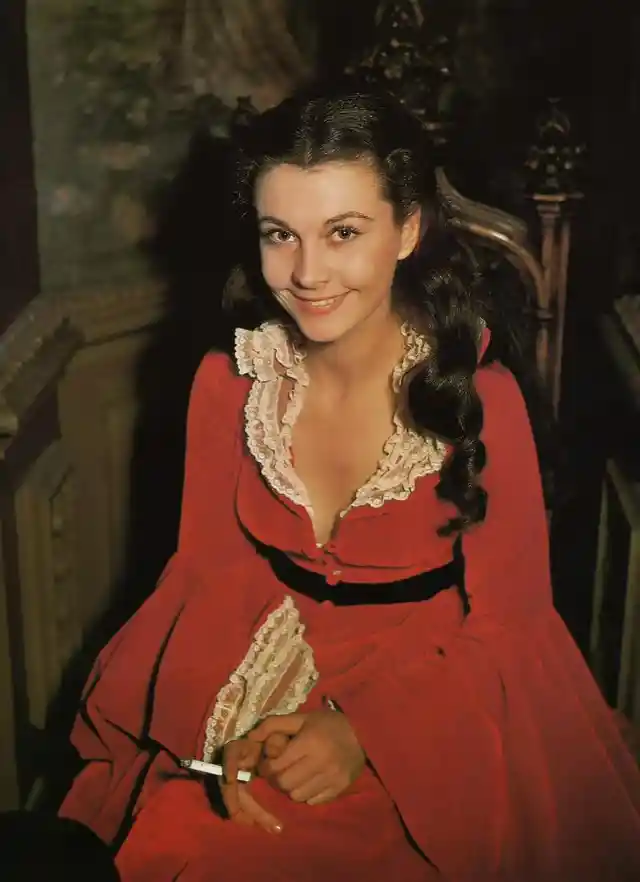
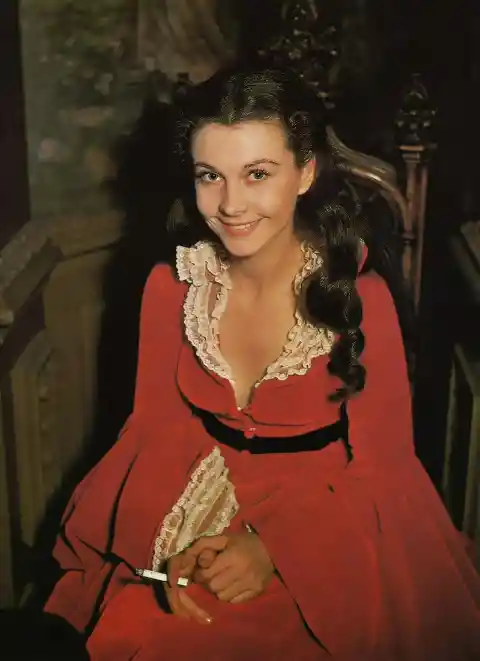
Consider Vivien Leigh, whose portrayal of Scarlett O'Hara in "Gone with the Wind" stands as a towering achievement in the annals of film. Yet behind the scenes, it was a battle. She faced the questioning glances of her American co-stars, all while wrestling with her mental health. The set of "Gone with the Wind" became an arena where she fought tirelessly, not just for her role but against the demons that plagued her.
Scarlett O'Hara might have been the role of a lifetime, but for Leigh, it was also a gilded cage. She lived in fear of being shackled to the image of the Southern Belle, forever reprising a role because it was what the world expected of her. "I'm terrified of being typecast," she confessed, voicing the fear that haunts many who've been touched by fame. She once said:
“ I think typecasting is one of the menaces because you get used to what someone is going to do and then it holds no surprise for you.”
Cher: The Unapologetic Shimmer in Showbiz's Sky
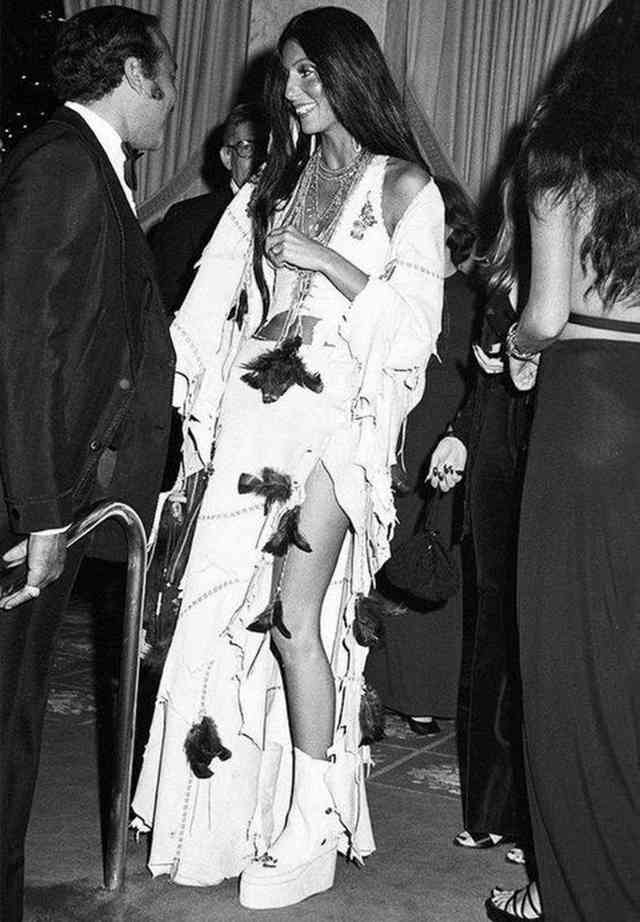
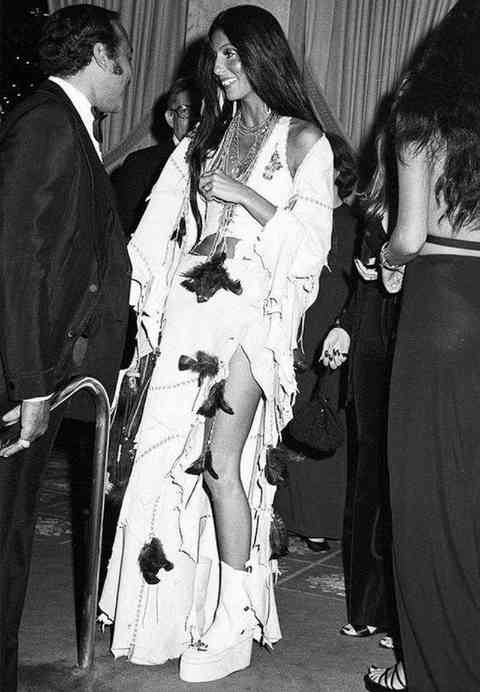
Cher's presence in the '60s was like a comet streaking across the entertainment industry—brilliant and impossible to ignore. As a singer and an actress, she felt the sting of the press which didn't take her seriously, writing her off as a temporary spectacle. But here's the twist: that 'temporary' spectacle has dazzled us for decades and doesn't seem to be dimming anytime soon.
She once talked about the label 'trashy' pinned to her lifestyle choices, a tag she wore with a sort of defiant pride. Cher pointed out the irony that Hollywood has always had its share of 'trashy' women who nonetheless carved out legendary careers. Yet, she's been cast as the rebel, the outlier. "There's been a bevy of 'trashy' women since the dawn of Hollywood who did just fine for themselves," she remarked, puzzled over why she's often the one in the spotlight for scrutiny. She told Film Comment:
“ There’ve been lots of trashy vamps who’ve been really good actresses. I mean there’s been lots of trashy people. Marilyn Monroe was a great actress; she was a real trashy woman… How about Mae West? How about Heddy Lamar? How about Ava Gardner? How about all kinds of actresses who lived a life that makes me look like f*cking Mary Poppins, you know? ”
Unlikely Stars and Unforgettable Tragedies: Tales of Fame and Loss

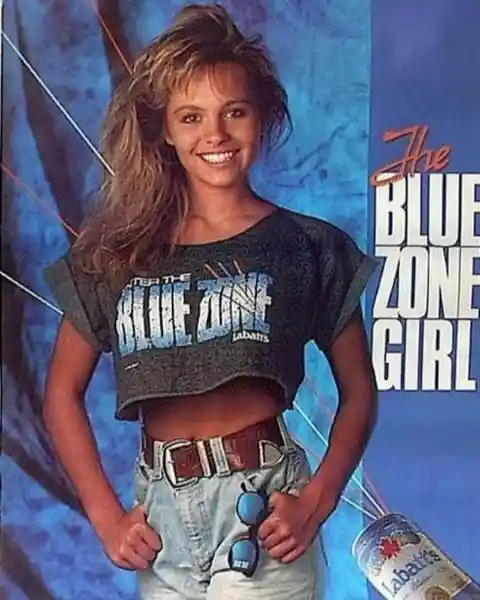
In the unpredictable world of fame, you never know where a star will be born. The stage, family ties, or, in Pamela Anderson's case, a football game where she shone brightly at 22. Spotted on the Jumbotron, sporting a Labatt Beer tee, she caught a scout's eye, and boom—she was the new face of the brand, her smile beaming from every magazine in Canada. Then came Hugh Hefner's call, and she was off to Los Angeles, her image immortalized in his magazine.
The lesson here? Maybe wearing your favorite brand could be your ticket to the big time—you never know.
The Echo of Sharon Tate: A Sister's Reflection
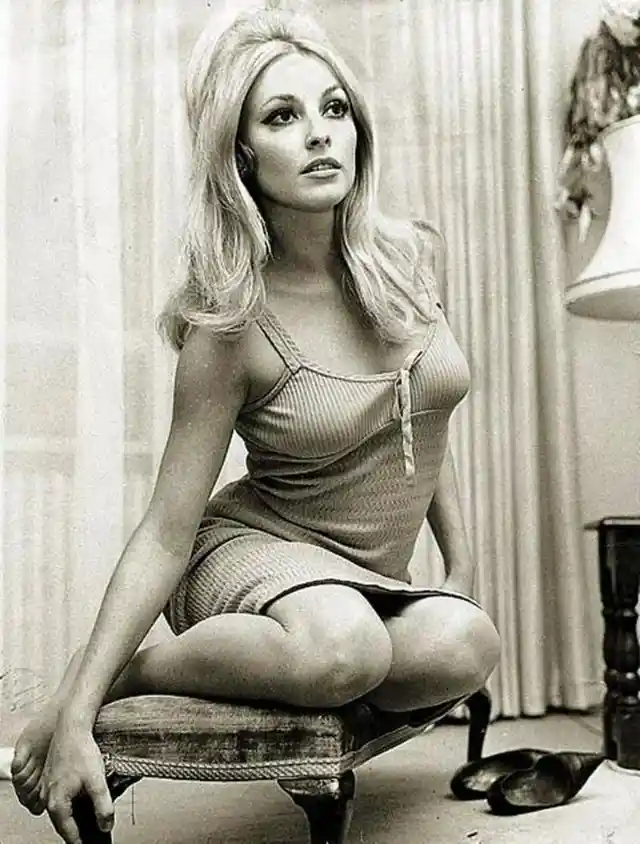
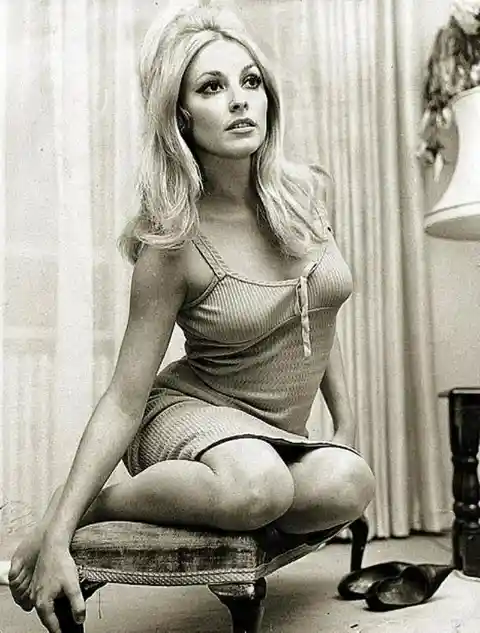
On a different, more somber note, Sharon Tate's memory is often shrouded by the shadow of her last day—a narrative that's as heartbreaking as it is chilling. Those who knew her, especially during the vibrant '60s, can't escape the echo of the horror that struck in 1969. But for Debra, Sharon's sister, the loss is a constant weight, a burden of what-ifs and memories. Debra holds onto a different image of Sharon, not just a tragedy but a "perfect embodiment of the '60s"—a woman of effortless beauty and an easygoing charm that defined an era. She told the New York Times:
" I think that she was custom-made for that era because she was truly a natural beauty. That particular era was all about freedom of spirit, and you were just coming out of the buttoned-up ’50s and early ’60s... And then fashion took a huge swing, and it was freestyle, and minimalistic. They needed a face and a body that was equally free-spirited and un-coifed, but yet beautiful and gentle, which is what the ’60s were all about, right?"
The Short Story Behind Daisy Duke's Shorts
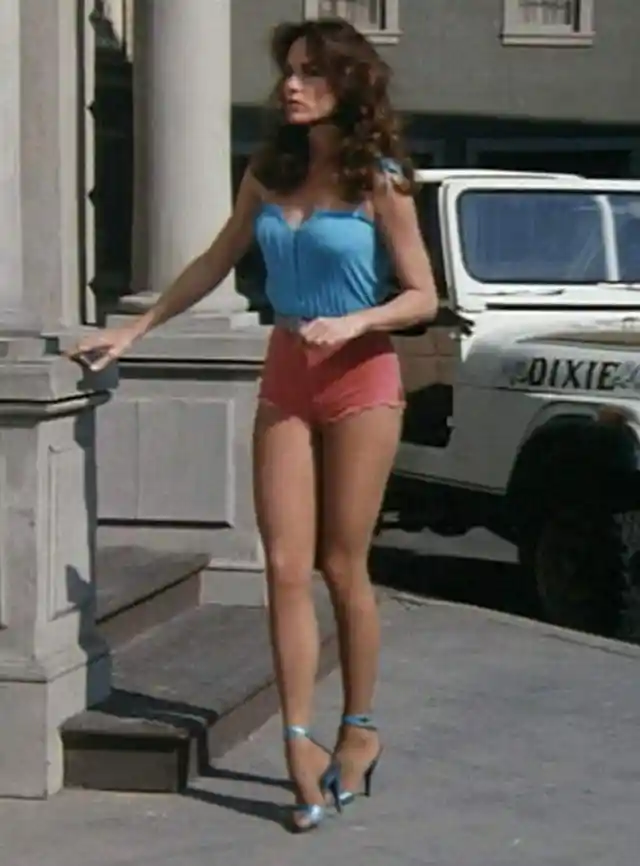
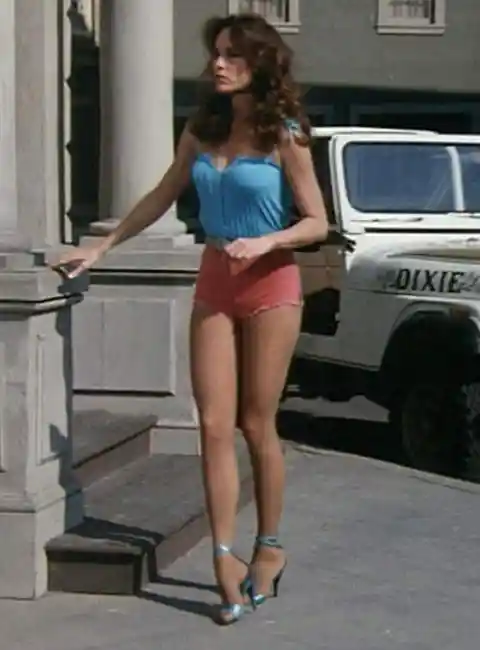
Picture the Dukes of Hazzard, and what flashes in your mind? That's right, Daisy Duke's legendary cutoffs. But here's a juicy bit of trivia: Catherine Bach, the original Daisy, almost didn't get to flaunt those iconic short shorts.
Rewind to before the show kicked off. Bach was gearing up to strut through Hazzard County in poodle skirts and go-go boots—quite the retro ensemble. But Bach? She wasn't feeling it. She had a different vibe in mind for her character's strut across the screen. She told In Style:
“ [The creators] wanted me to wear a poodle skirt that matched the tablecloth. I said, ‘You want me to match the tablecloth? That’s demeaning to women.’ I had go-go boots, a white turtleneck, and a blonde wig because the creator loved Dolly Parton. I thought, ‘We need a costume change.’ So I got my jean shorts that I could never get even, with cowboy boots and a little top … They loved it.”
When Priscilla Met Elvis: A Love Story Fit for a King
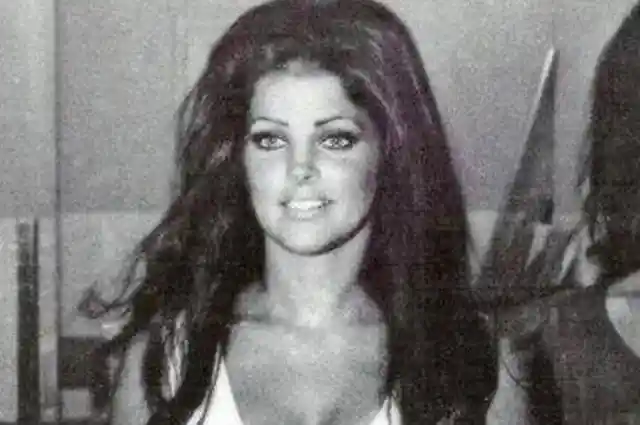
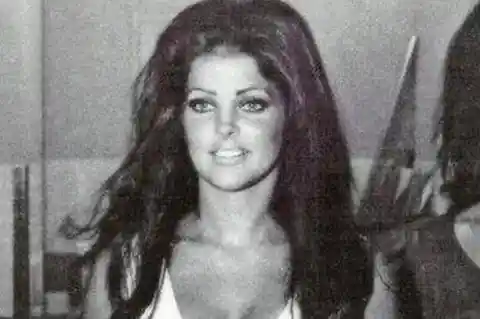
Back when Priscilla was just starting out in life, fate led her to Elvis while he was stationed in Germany. It was like the stars aligned—him, the King of Rock 'n' Roll, and her, the coolest girl around.
But even in the midst of this fairy tale, Priscilla was dogged by doubts. She couldn't help but wonder if she measured up to the towering image of The King—in the glare of the spotlight, among the sea of fans, and maybe even in Elvis's own eyes. It seems wild, considering her stunning beauty. Yet, in a candid chat with the Guardian, she shared her innermost fears during her pregnancy with Elvis's child, all these thoughts consuming her mind.
“ After we got married in May 1967, when I was 21, I got pregnant straight away. Initially, I was devastated. I thought, 'Oh my gosh, here I am married and now I'm pregnant and I'm not going to look attractive anymore.' It was certainly a rocky time. It was hard for Elvis too because he was a sex symbol – the most wanted sexual specimen in the world. And he was apprehensive about what his fans would think about him being a dad and how that would affect his status as a sex symbol.”
Shirley Muldowney: The Grit and Glamour of a Racing Legend

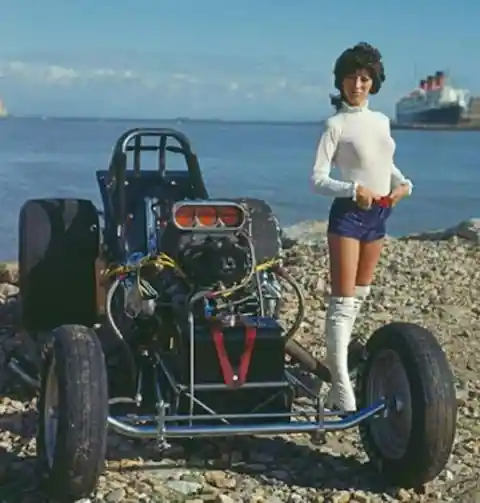
Ripping through the 1960s with a roar, Shirley Muldowney wasn't just any driver; she was "Cha Cha," a name whispered with a mix of fear and respect in the racing world. She was as fierce as they come, even when the stakes meant facing down injuries that could make your skin crawl.
Then came 1984, the year that could have put a full stop to her story with a horrific dragster crash. But Shirley? She wasn't about to let that be her legacy. After grueling months of surgeries and rehab, she could've hung up her helmet for good. But quitting wasn't in her book. She had a point to make. "I returned just to prove everyone wrong," she declared, her comeback silencing the naysayers. As the sport evolved, becoming more inclusive, she watched the sexist jeers fade away. Reflecting on her journey, Shirley acknowledges the role she played in shaping drag racing's history.
“ The older I got is when things started to change, and the more respect I got. Now people will come up to talk to me and they’ll start crying. They’re just thankful.”
"Jungle" Pam Hardy -- 1973...she seemed to have the life the young girls would only dream about, but she sadly took her own life.

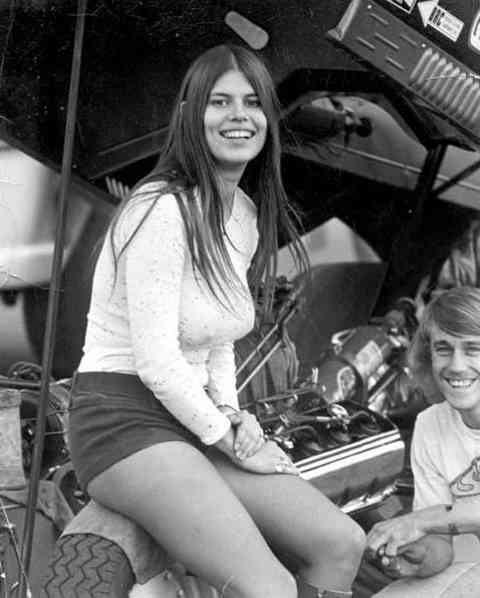
In the thunderous realm of drag racing, "Jungle" Pam Hardy stood out as much more than just a pit girl. Plucked from obscurity by funny car driver "Jungle" Jim while simply strolling down the street, Pam quickly zoomed into the spotlight as his partner in both life and the lane.
Pam may not have been a car guru, but she sure knew how to captivate a crowd. Whether she was checking the oil or positioning the car, she had a knack for keeping all eyes fixed on their team. With her flair for showmanship, she became one of the era's trailblazers.
But her time in the fast-paced world of funny cars was fleeting. After making a name for herself and becoming a fan favorite, a shroud of tragedy fell—Pam tragically ended her life, leaving the racing world in shock.
Disco Nights and Warhol Lights: Debbie Harry's Studio 54 Memories
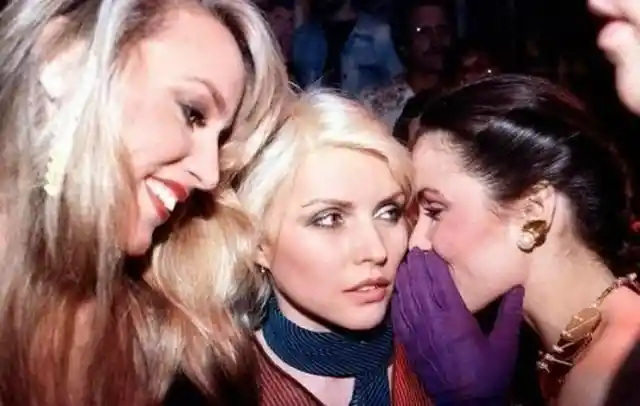
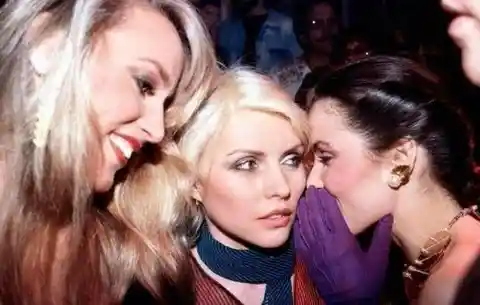
Switching gears to the disco dazzle of 1970s New York City, the party never seemed to end, especially not at Studio 54. Despite the many snapshots of Blondie's Debbie Harry at the club, she insists it wasn't her usual haunt.
But there was that one unforgettable night. It was one of Andy Warhol's legendary bashes, a whirl of glitter where the crème de la crème of art, literature, and music mingled. For Harry, that was the night Studio 54 truly sparkled, a party that lived up to the club's mythic status. She told Elle:
“ I remember going to Studio 54 and getting drunk. And not really knowing how I got drunk and ended up in a pile of bodies. I don’t think I went there a lot – it wasn’t my scene. We were more downtown rockers. The time that I do remember [most] specifically was when Andy threw the party for Interview magazine. I was on the cover and I met Truman Capote – I was so star-struck I could barely talk. I think he was high. With the loud music, you couldn’t talk.”
From Midwest to Megastar: Madonna's Uncharted Journey to Fame

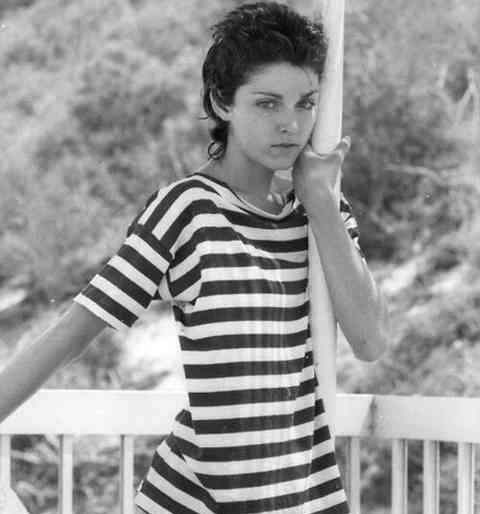
Madonna's fame is almost like a permanent fixture in the sky of celebrities, so much so that it's easy to overlook her roots in the unassuming landscapes of Michigan. Far from the shimmer of stardom, she honed her craft in dance, fueling her dreams with a string of odd jobs and nights on stage in New York's grittiest clubs. Then the '80s rolled around, and with them, her big break.
But here's the kicker—even with the world at her feet and her name in lights, Madonna confesses that fame caught her off-guard. She wasn't ready for the whirlwind that hit her, but then again, who ever is? She told the Guardian:
“ It took my breath away. I can’t begin to tell you. I remember the first concert I did on the Virgin tour, in Seattle, when everything became big and I had no way of being prepared for it. It sucked the life out of me, sucked the air out of my lungs when I walked on stage. I sort of had an out-of-body experience. Not a bad feeling, not an out-of-control feeling, but an otherworldly feeling that nothing could prepare you for.”
The Cosmic Curveball: Jane Fonda's 'Barbarella' Voyage

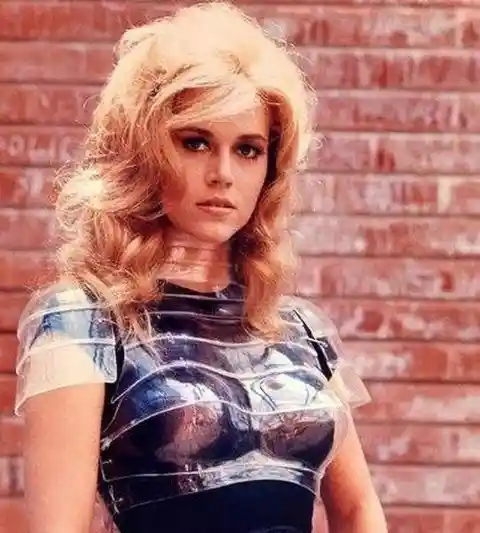
Jane Fonda's journey through the realms of film and politics paints a picture of a woman with grit and substance. It's almost a twist in the plot to find her in the midst of a space odyssey as the sultry secret agent 'Barbarella,' under the direction of Roger Vadim in a film that's a feast of European sci-fi sensuality.
Though 'Barbarella' soared as a cult phenomenon from the get-go, Fonda's feelings towards her role weren't always wrapped in stardust. Post-release, she grappled with her choice, the success a stark contrast to her inner turmoil. With time, her perspective shifted. Now, she understands the film's allure and the necessity of its dazzling wardrobe, recognizing how they contributed to the magic that made 'Barbarella' iconic.
“ For a long time, I couldn't look at it. I thought that it was politically incorrect, you know. I can look at it now and laugh at it, and find it very charming.”
Spellbound Success: Elizabeth Montgomery's Bewitching Dedication
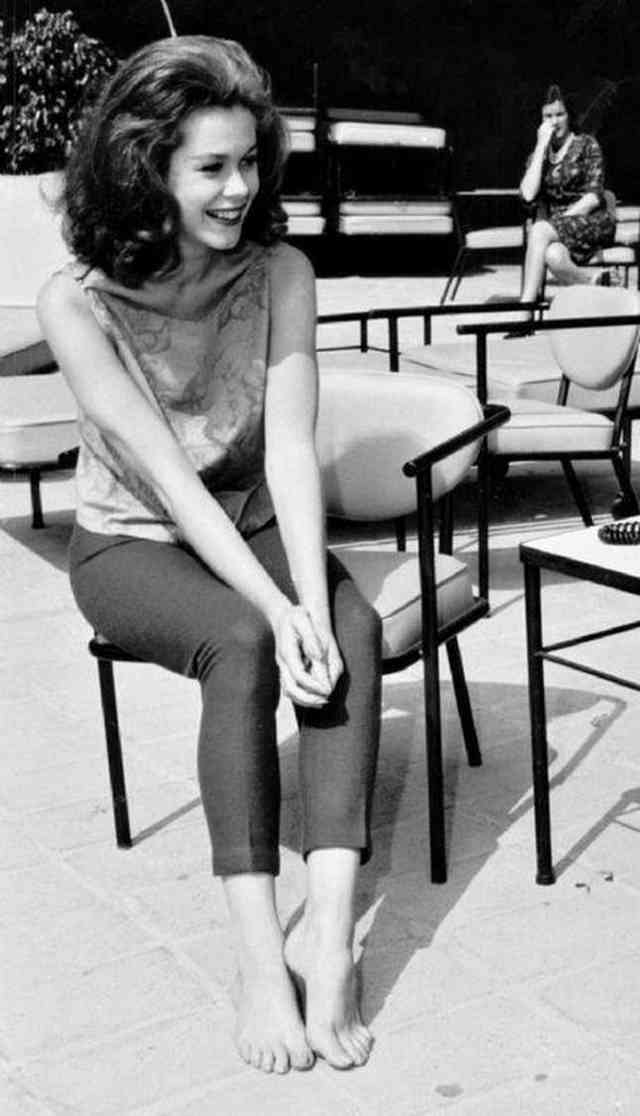
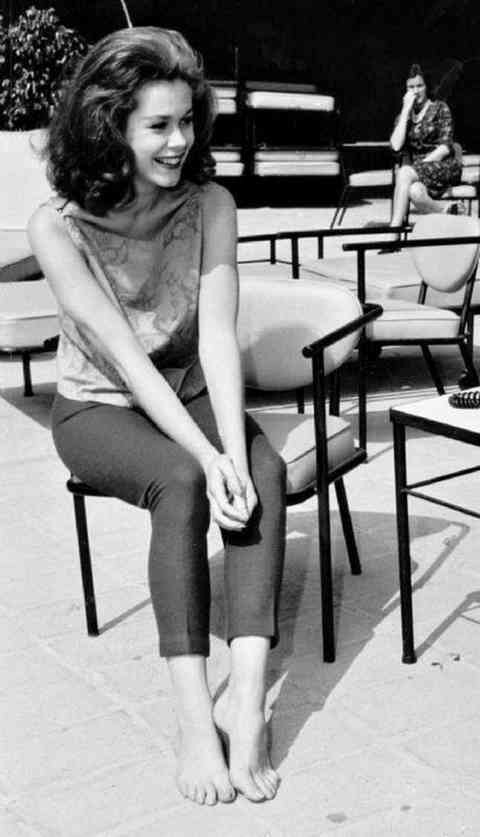
In the magical world of '60s television, Elizabeth Montgomery shined as the enchanting star of 'Bewitched'. She poured her heart into the show, crafting the story of a witch striving for normalcy with as much charm and dedication as she could muster. Her spell worked well beyond the final episode—the show not only took prime time by storm but continued to captivate audiences in reruns through the '80s and '90s.
Montgomery wasn't exactly taken aback by the show's success. She knew the effort she put in, aiming to make it nothing short of spellbinding. But the one aspect of her fame she didn't relish? The interviews. Discussing her magical role behind the scenes was a charm she preferred not to cast. She explained:
“ It’s a strange thing . . . I loathe to chat away about me. I’ve never liked it. I always hate interviews. I just want to act, and do the best job I can. Hopefully, people will appreciate it. That’s what my job is. It isn’t sitting down and talking about me. If I were a gardener, I would be out there trying to make gardens as pretty as I could, and not expect people to come up to me and ask a lot of questions. What it boils down to is this: It’s always easier for me to talk about other things than it is to talk about me.”
Young Demi Moore, circa 1980s...she left home at age 15, and her first paid gig was a nude photo shoot at age 16
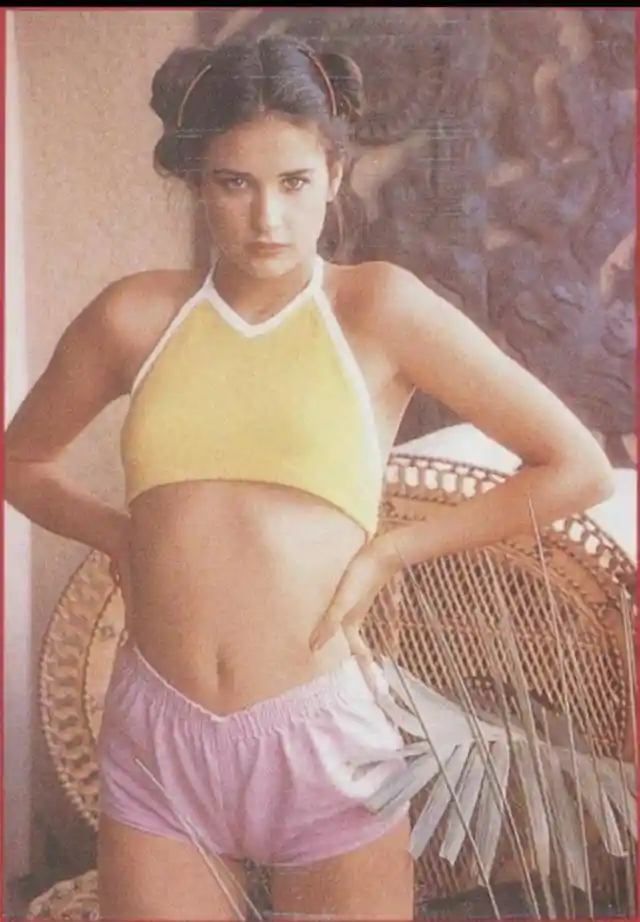

The bright lights of Hollywood offered Demi Moore more than fame—they offered an escape. Her teenage years were marked by turmoil, pushing her to leave home at 15 with dreams bigger than her circumstances. A stint living with a guitarist at 16 and then jetting off to Europe to model gave her life the twist of adventure she yearned for.
Moore confesses that modeling didn't fill her pockets, but back then, it wasn't about the money—it was about soaking in every drop of life. Her fortunes shifted when she returned to the U.S. and tied the knot with rock musician Freddy Moore. Not long after, she was gracing the screen in 'General Hospital', TV movies, and by the mid-'80s, she had earned her spot in the infamous Brat Pack. The fame she once sought had found her.
Spy Scenes and Serenades: Madeline Smith's Bond Experience

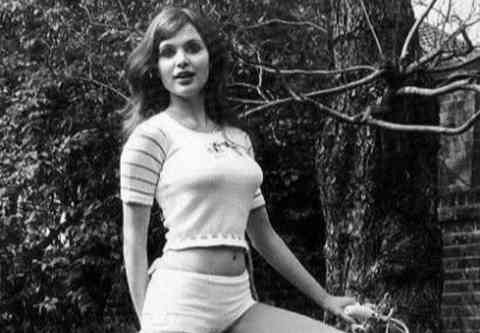
When Roger Moore stepped into James Bond's shoes in 'Live And Let Die', he was joined by one of the most memorable Bond girls, Madeline Smith as Miss Caruso. Smith treasures a unique perk from the film: she got to enjoy Paul McCartney's tunes before they hit the airwaves.
Back then, Smith didn't really grasp the magnitude of being part of the Bond legacy—it was just another role. But time has a way of coloring memories, and now she looks back with a sense of awe at her time alongside Moore in such an iconic film. She explained:
“ Interestingly enough in those days, all that time ago, it was not considered such a huge thing to do, it could actually ruin your career because they would typecast you forever. Sometimes people were not always happy to accept the part, and that’s true. Now it’s a huge career enhancer, it was not a minus or plus in those days, it was delightful to have done. I didn’t get any publicity from it at all at the time which is interesting, now it’s actually paying off, you have to remember that it was 1973.”
Beyond the Silver Screen: Brigitte Bardot's Timeless Allure and Compassionate Legacy**
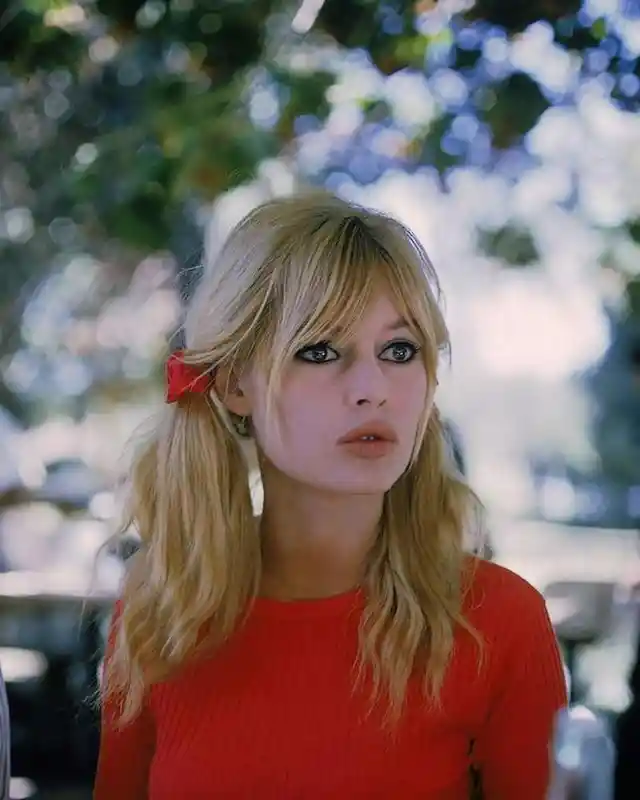
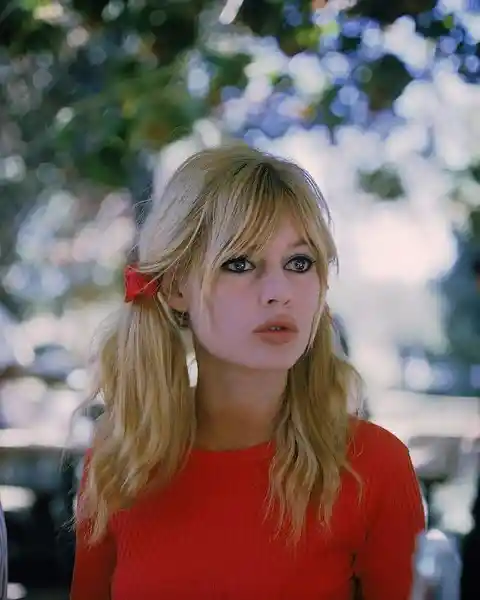
Even after Brigitte Bardot decided to step away from the movie cameras in 1973, her status as a '60s beauty icon has kept her in the warm embrace of public adoration ever since. The glitz of the film industry lost its shine for Bardot, who grew weary of the relentless demands to be the epitome of perfection. Yet, she never fully retreated from the limelight.
Bardot may have said farewell to acting, but she didn't go silent. Instead, she channeled her fame into a heartfelt cause, establishing the Brigitte Bardot Foundation. With a mission as fierce as her on-screen presence, her organization fights tooth and nail for the welfare of animals, proving her compassion rivals her iconic beauty. She said of the foundation:
“ We have financed the construction of a wild animal hospital in Chile, as well as a park to care for mistreated bears in Bulgaria, for koalas in Australia, for elephants in Thailand, and horses in Tunisia. If the foundation wasn’t active, a great many species conservation programs would be non-existent.”
Model Jerry Hall partying at Studio 54 in the 1970s. (Photo by Helmut Newton)

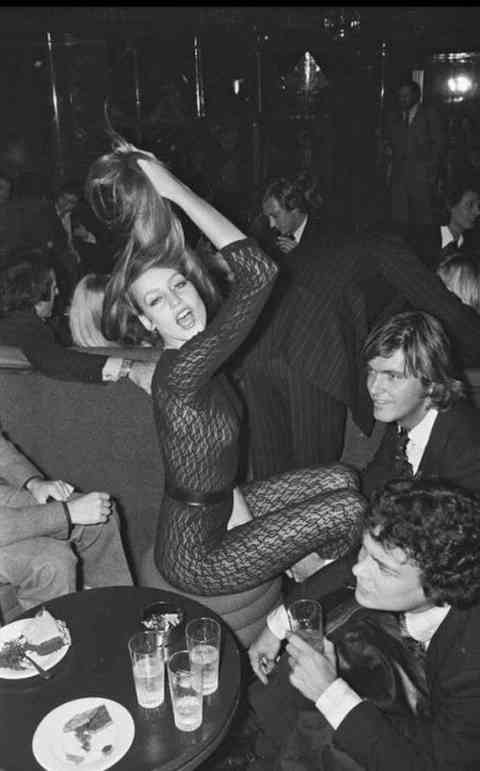
Imagine the thrill of heading to Studio 54 back in its '70s heyday. That's where the week's monotony melted into a swirl of dance moves and celebrity sightings. The era of excess and glamour lives on in photos that capture every wild and glitzy moment of that discotheque dreamland.
Behind the lens, legendary photographers like Helmut Newton and Rose Hartman worked their magic, immortalizing the nights of decadence. Hartman herself, reflecting on her iconic shots, says they're her personal time machine. She delights in the fact that her photos whisk others back to those halcyon nights too. When someone tells her that her images transport them back in time, it's music to her ears:
“I was thrilled that I was able to take these pictures, for example, Lou Reed talking with Andy Warhol, or Jerry Hall sitting with Diana Vreeland, who was Editor-in-Chief at Vogue. Images like that just thrill me! I was delighted that I was able to take them. People come up to me all the time, and some don’t know I took the photo they weren’t even born back then, and they would say 'You took that photo? That is a fabulous photo.' It was true, it is true. It never gets old.”
Stepping Into an Angel's Halo: Cheryl Ladd's Leap into Fame**


Trying to step into Farrah Fawcett's shoes, with her iconic floppy hair and that red swimsuit, is like trying to catch lightning in a bottle—a feat many would say is impossible. Farrah wasn't just a part of 'Charlie's Angels'; she was a phenomenon. So when Cheryl Ladd was tapped to fill the void left by Fawcett after the first season, she knew the size of the stilettos she was being asked to step into.
After all, Fawcett had skyrocketed to stardom on the wings of the hit ABC series, and when she decided to spread those wings further, it left quite the vacancy. Aaron Spelling, the mastermind behind the series, didn't just want anyone. When Ladd initially said no, he didn't skip a beat. He saw that spark in her, and he had a vision—not for Ladd to replace Farrah, but to bring a fresh twist as her character's sister. That idea? That was something Ladd could say yes to. She explained:
“ He said, ‘Why couldn’t you be Jill’s little sister and you’re already part of the family?’ I said, ‘I’m in!’ It was brilliant.”
The glamorous Elizabeth Taylor, 1956

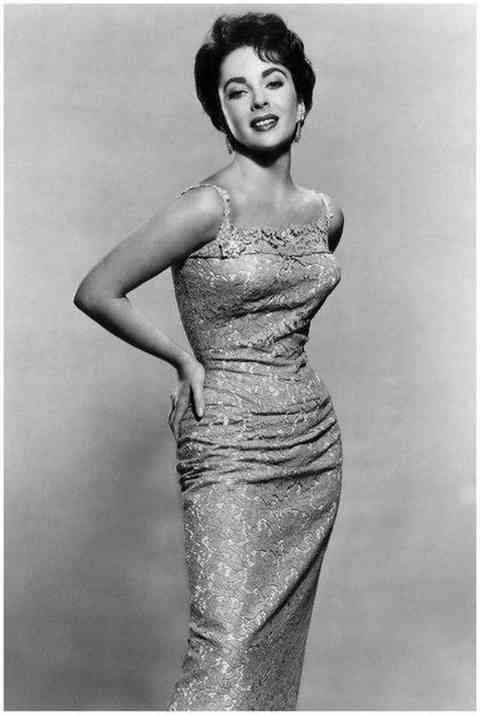
Elizabeth Taylor, with her violet eyes and life more colorful than the silver screen, practically invented modern stardom. She was as much a sensation in her movies as she was in the headlines, with her string of marriages serving up endless gossip.
Taylor thrived in the glow of the cameras and adored the dance of acting alongside her peers. Yet, when it came to still photographs, she was ambivalent. She could take them or leave them—unless, of course, the one behind the lens was a friend. Then, it seems, even Hollywood's grand dame couldn't resist a good photo op. She told Interview Magazine:
“Having to smile when you don’t feel like it. Turn to your left, and turn to your right. Smile when you feel like snarling. There’s something meretricious and superficial about having to look into the camera knowing you should look your best, knowing you should try to look pretty. It’s all about self and I hate that unless it’s with someone I love taking my picture.”
The grooviness of Dawn Wells in 1970
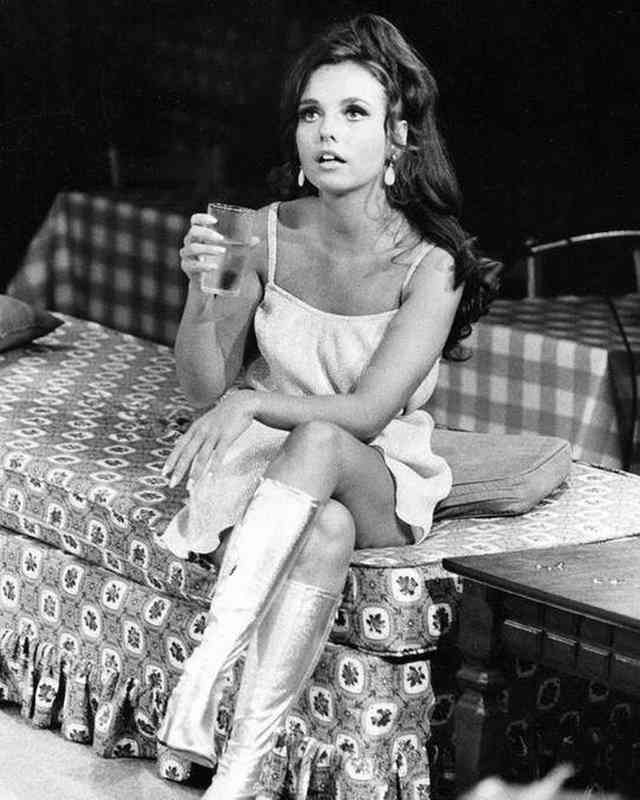
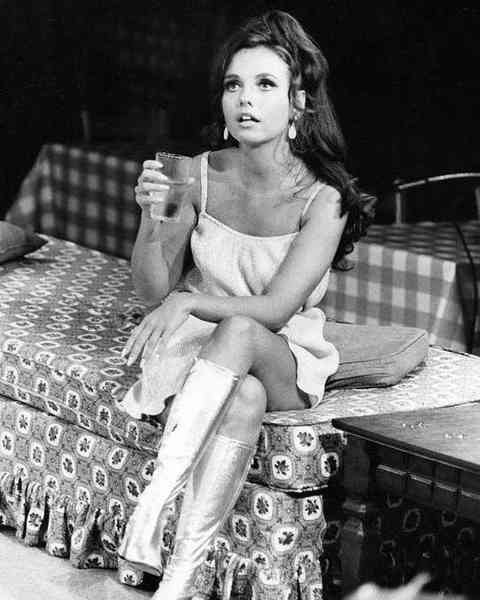
Dawn Wells might forever be synonymous with Mary Ann from 'Gilligan's Island', but that single character didn't define her enduring charm. After the island adventures ended, she sailed into other beloved TV territories like 'Bonanza' and 'The Love Boat', and even returned to her iconic role in spin-offs of the shipwrecked saga.
While some stars might bristle at being eternally linked to one role, Wells embraced it with open arms. She spoke fondly of Mary Ann, understanding her sweet, girl-next-door appeal. She even zipped into the animated universe of 'Space Ghost Coast to Coast' to poke fun at her island persona, all because she saw Mary Ann as a wholesome beacon for youngsters, a role model as enduring as the actress herself.
“ I think it’s very difficult being a parent, or a best friend. There are no guidelines. My generation was pretty black and white. There were no drugs, and no sex before marriage. Now with all of the temptations and all of the permissiveness everywhere, it’s much harder to raise a child. But there still needs to be a guideline behind it, and I think that’s Mary Ann.”
Suzanne Somers from Three's Company goes for a solo hay ride
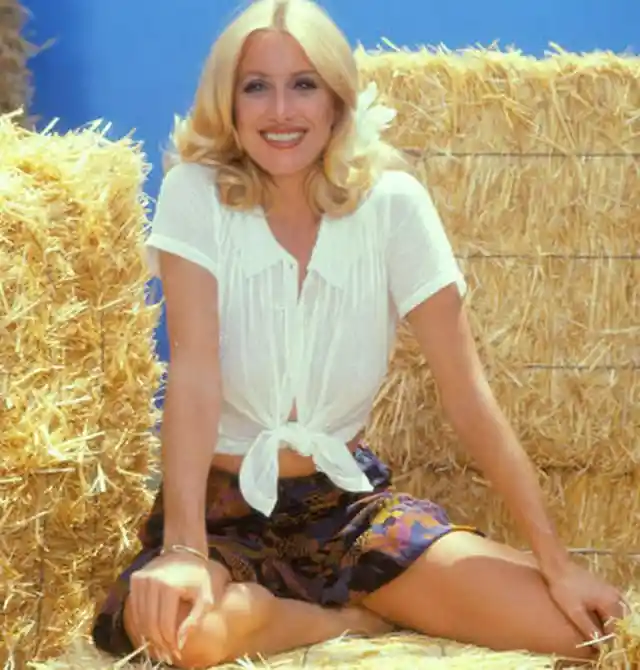
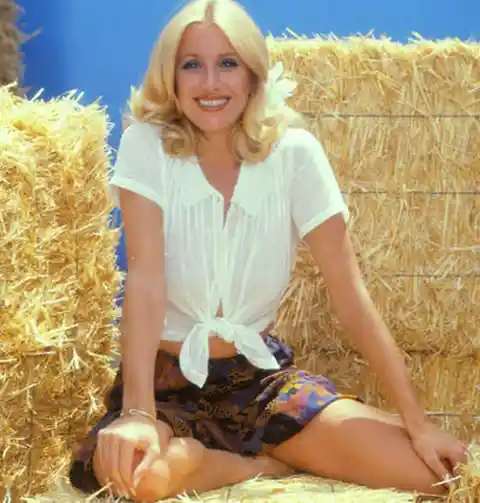
Suzanne Somers wasn't just a part of 'Three's Company'—she was one of the pillars that held up the hilarious hijinks of the show. Yet, when she sought equal pay to her co-star John Ritter, the laughter stopped. Her bold stand for fairness saw her character scrubbed from the script and Somers herself ousted from Hollywood's inner circle.
The aftermath was brutal. She didn't get a chance to wave farewell to her fans, and the doors that once swung open for her in Tinseltown suddenly slammed shut. Recounting those days to In Style, Somers quipped about her isolation, "I was so out of the loop that I couldn't even catch a cold." It was a cold season for the warm personality that once graced America's prime-time evenings.
“ After I was fired, I couldn't get a job. And I still don’t know what they told the cast, but everyone turned against me. So much so that I remember walking down Rodeo [Drive] one day, and the wardrobe guy who I created the Chrissy outfit with — you know, the sandals and the hot pants — saw me and crossed the street. It was sad.”
Young and beautiful Victoria Principal, from the early 80's.
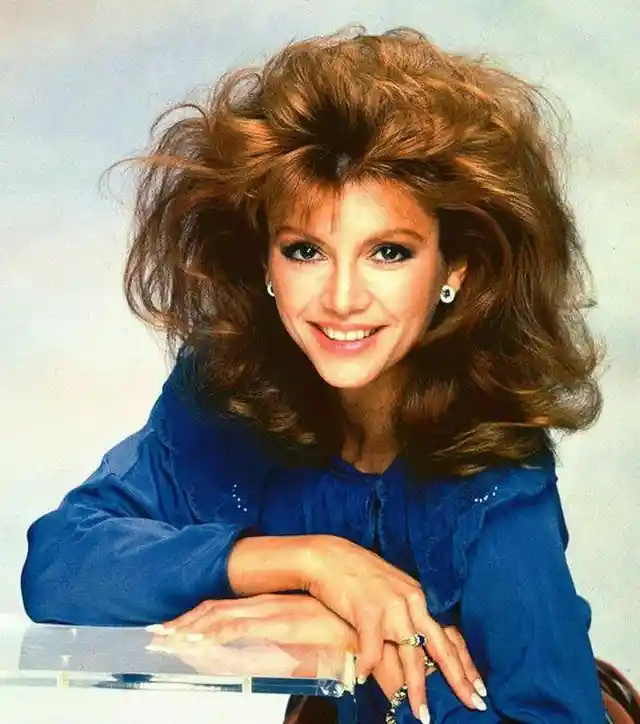
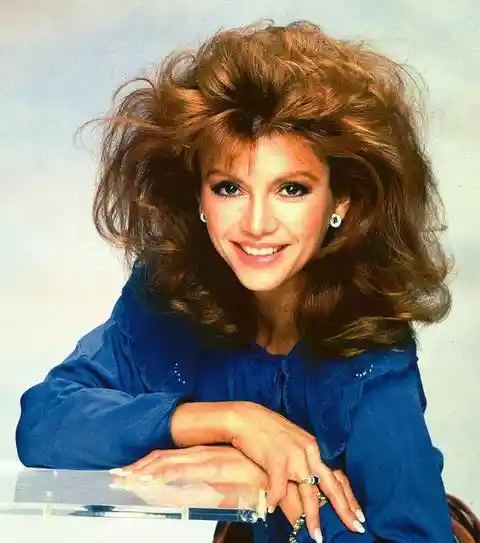
Victoria Principal might forever be linked to the iconic Pamela Barnes-Ewing from the hit show 'Dallas', yet she's just as enchanted by the prime-time drama as any viewer glued to their screen. While starring in one of television's beloved soap operas was a dream come true, it wasn't the fame or the script that left the deepest impression on her—it was the kindness she received from the get-go.
On her very first day on set, the warmth she felt from everyone was what truly took her breath away. Speaking with TV Insider, she reflected on that experience, sharing that the welcome she received was something that stood out for her in the whirlwind of 'Dallas.' It wasn't just about being on a major TV series—it was about the heart behind the scenes.
“ Everything was new to me; I was nervous, and yet I felt strangely sure that I was where I was supposed to be and with the people I was supposed to be with as though this had happened before... I remember looking up at [executive producer] Lenny Katzman as he leaned outside the car door giving us direction and thinking that I trusted him and would do my best to please him. I remember looking at Patrick when he did not know it and thinking, 'This a nice person.' And that made falling into his arms and our love scenes that day so much easier and natural.”
Susan Sarandon, her first movie appearance was in the movie "Joe," 1970.
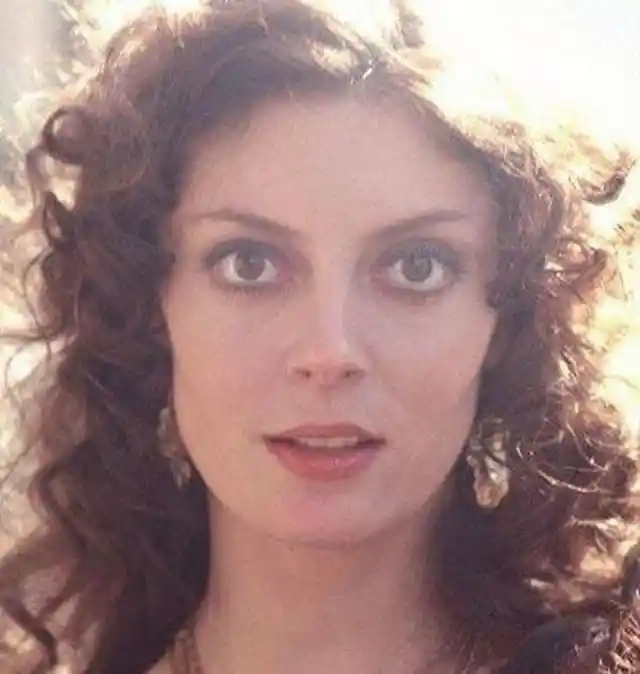
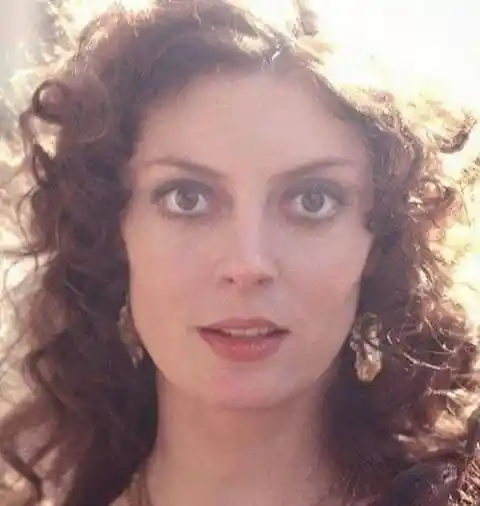
Susan Sarandon didn't just tiptoe into the acting world; she strutted through the doors of independent '70s cinema and danced her way into our hearts as the fearless Janet in 'The Rocky Horror Picture Show'. From there, she carved a path through the decades with roles that showcased her depth and dynamism.
Always bold and unapologetically candid, Sarandon never hesitated to let Hollywood's power players—from directors to journalists to fellow actors—know exactly what's on her mind, even at the risk of ruffling a few feathers. She's tackled the industry's top brass, never shying from the tough conversations about the challenges female leads face, particularly from male executives. It's this fearlessness that has cemented her as not just an accomplished actress, but a formidable voice in the industry. She told The Independent:
“ Maybe women just have more fluid imaginations. Because it’s a male-driven, patriarchal society, men haven’t had to adjust. Maybe they just haven’t been challenged in terms of their imagination.”
The Two Faces of Marilyn: Monroe vs. Norma Jean
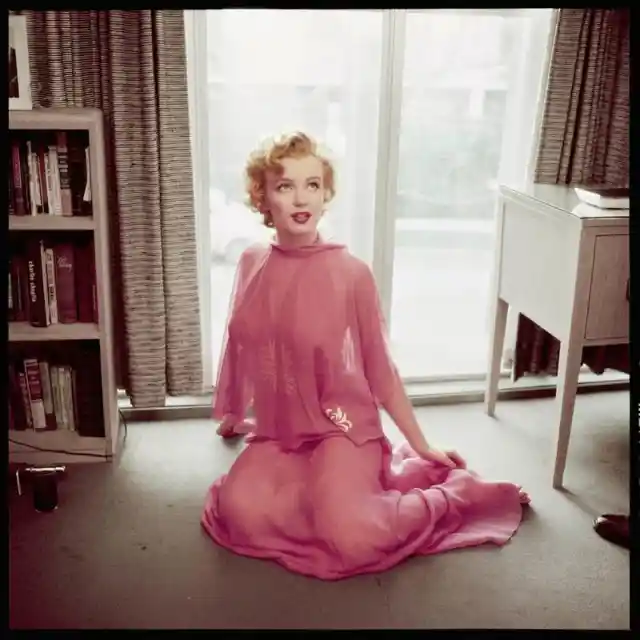
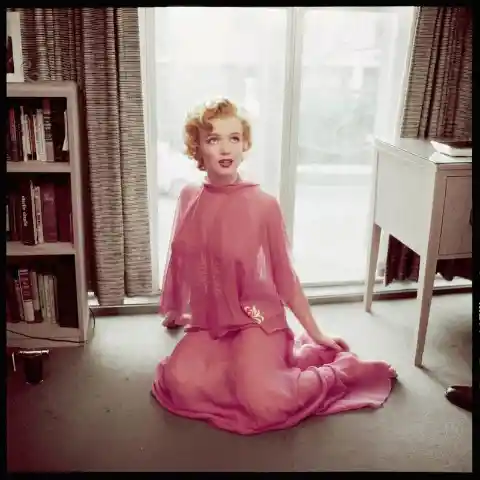
When Marilyn Monroe stepped out of Norma Jean's shadow, she didn't just walk into the limelight; she became its very essence. She recognized the weight of her fame, the constant pull of an audience that wanted every piece of her—even when she felt she had nothing left. Labeled as the ultimate blonde bombshell, Marilyn was a mosaic of complexities far beyond the camera's gaze.
Her world was a tapestry of contrasts so stark that Marilyn and Norma Jean could have been two souls sharing one spotlight. In the raw confessions of her final interview, Marilyn peeled back the curtain on her life, hinting at the chasm between her public persona and her private struggles. It was a role that demanded everything and, in her own words, was far from the glittering dream it appeared to be.
“ I realize some people want to see if you're real. The teenagers, the little kids, their faces light up. They say, 'Gee,' and they can't wait to tell their friends... In the morning, the garbage men that go by 57th Street when I come out the door say, 'Marilyn, hi! How do you feel this morning?' To me, it's an honor, and I love them for it... You know, those are times it's nice. People know who you are and all of that, and they feel that you've meant something to them.”
Heather Thomas, the Fall Guy beauty
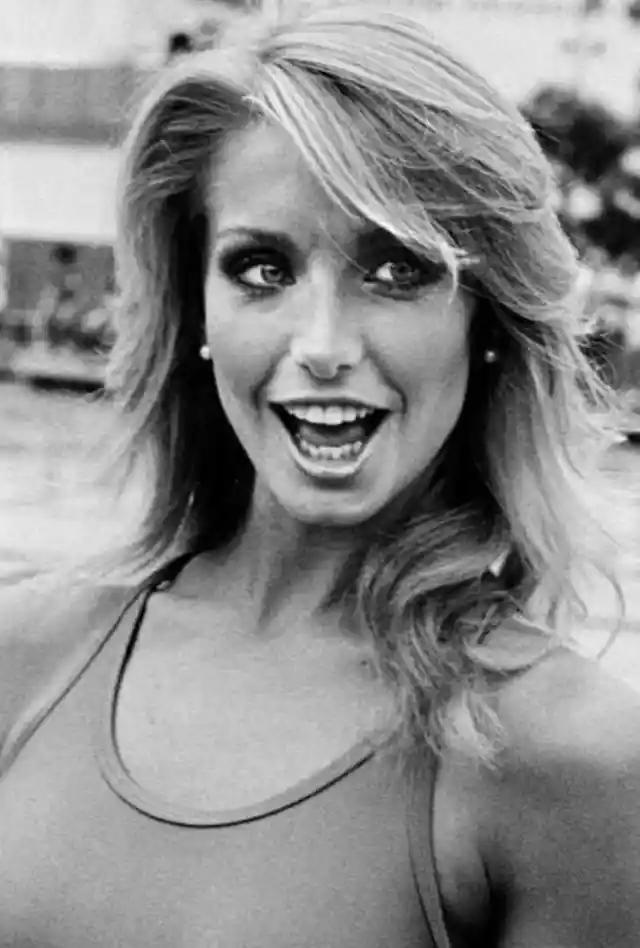
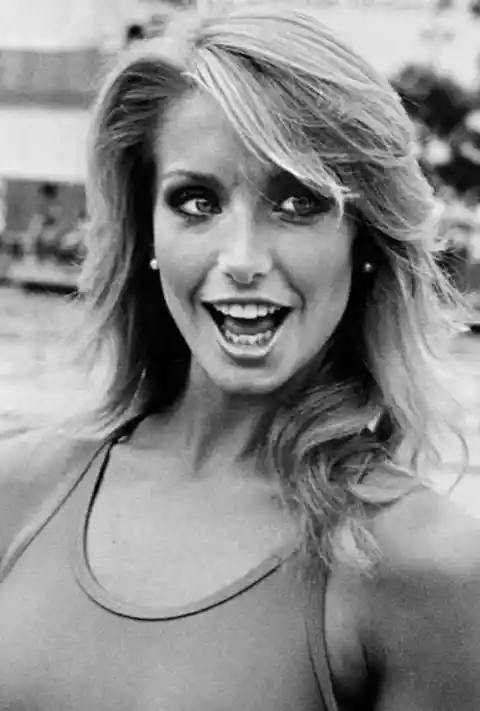
Heather Thomas didn't just grow up on any streets, but the streets of Greenwich, where dreams of Hollywood glimmered early. By 14, she was already chatting it up on 'Talking with a Giant', and after hopping from show to show, she struck gold—or rather, TV gold. In 1981, Thomas landed the role of Jody Banks on 'The Fall Guy', and that's when her star really began to rise.
Over a hundred episodes later, Thomas began to appear less frequently on our screens, not because her star was dimming, but because she chose a different path. She opened up about the darker side of fame, where stalkers lurked, a shadow she didn't want to cast over her children's lives.
Turning a page, Thomas channeled her creativity into writing and activism, proving that for her, the show did go on, just on a different stage.
Raquel Welch: From Scientist to Screen Siren
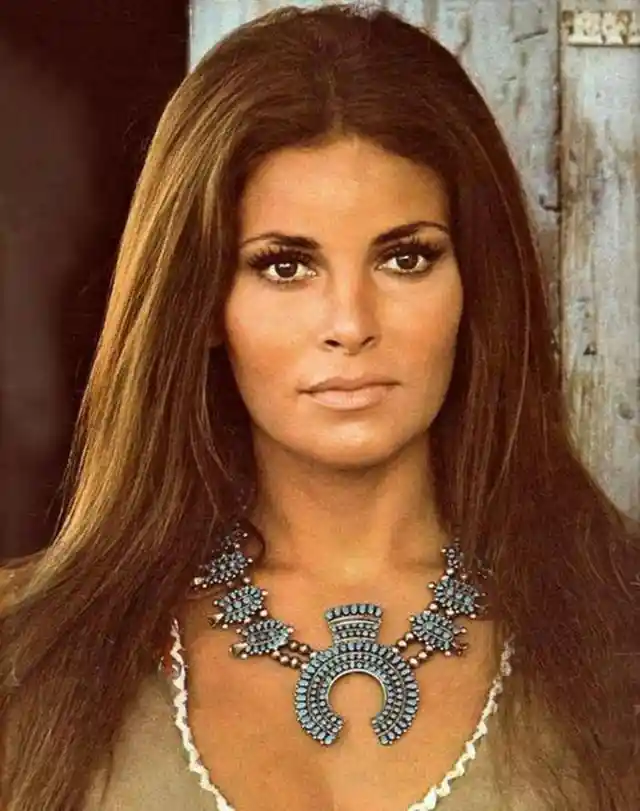
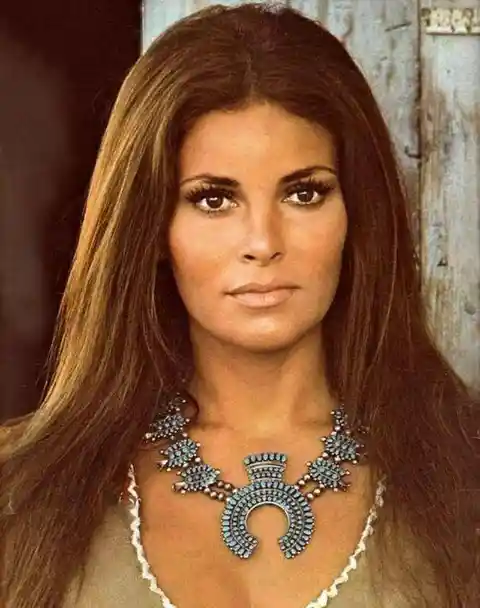
Raquel Welch leaped onto the cinematic scene in the swinging '60s, her allure impossible to ignore. She had no inkling her career would pivot the way it did. Initially cast as a scientist, Welch thought she'd be the brains in the lab coat. But after she sizzled on screen in 'One Million Years B.C.', her trajectory was irrevocably altered.
Chatting with GQ, Welch reminisced about the role that catapulted her to sex symbol status. Once audiences saw her in that now-iconic prehistoric getup, the idea of her playing the reserved scientist was as extinct as the dinosaurs she dodged on screen.
“ I didn’t know I was going to burst on the scene as a sex symbol. I mean the first part that I played under my contract at 20th Century Fox was Fantastic Voyage where I played a scientist! I was going to be reduced to microscopic size and injected in the human bloodstream traveling in inner space to examine how the body works... But that particular costume that I wore in One Million Years B.C. [the fur bikini], that image of me was circulated all over the world even before Fantastic Voyage really hit the screen.”
"Blonde" Brigitte Bardot -- 1950s

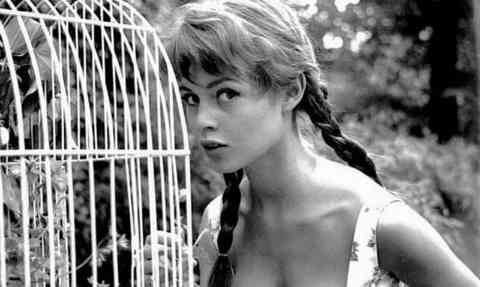
Brigitte Bardot, the quintessential European stunner, captivated the world with her roles that often highlighted her stunning visage. While she's etched in memory as the quintessential blonde bombshell, Bardot's tresses didn't always shimmer with golden hues—she was a natural brunette.
Picture this: those famous blonde pigtails that turned heads everywhere actually started as a simple brown side ponytail. It was the visionary eye of director Roger Vadim who orchestrated her transformation into a blonde, a look that became synonymous with Bardot's enigmatic allure. Would she have mesmerized audiences the same way with her natural color? We can only guess, but it's safe to bet Bardot's charm transcends hair color.
Olivia Newton-John as 'Sandy' in "Grease" (1978)
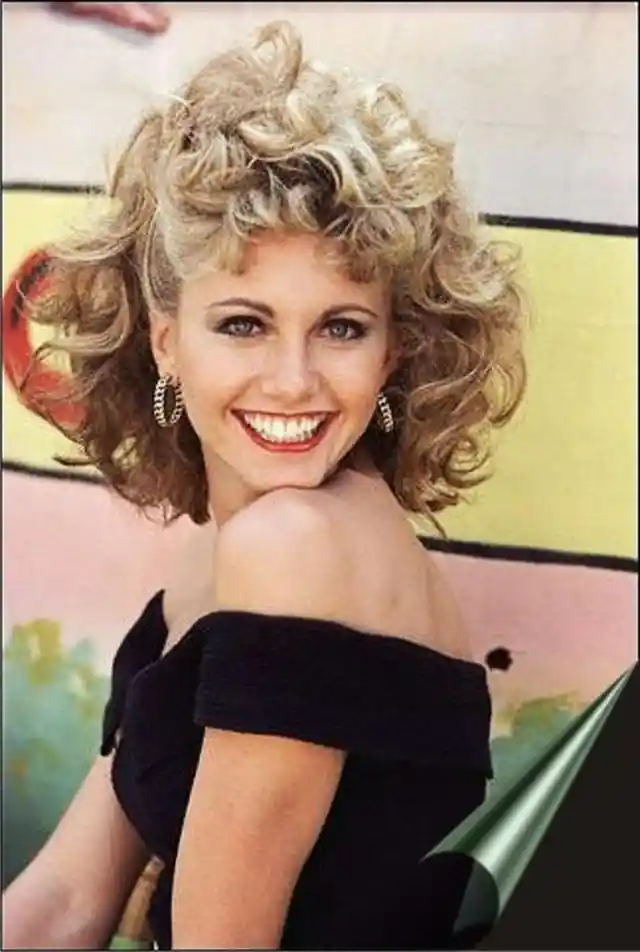
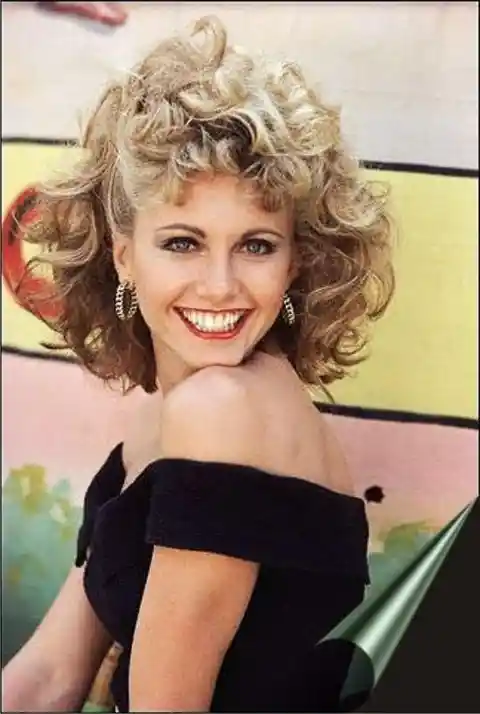
It's hard to picture anyone other than Olivia Newton-John as 'Sandy' in "Grease," but the truth is, the role could have slipped through her fingers. Imagine a world where Marie Osmond or Linda Ronstadt strutted alongside John Travolta—because that almost happened.
But Travolta wasn't having any of it. He saw only one Sandy, and that was Newton-John. He made his case to the producers, insisting on why she was the one that they wanted. It's clear he knew what 'Grease' needed, and he wasn't afraid to push for the perfect pairing. He explained:
“ Every guy in the world wants Olivia Newton-John as their girlfriend. And I knew that because I wanted that, I felt the same way. And every girl wants to be like her and I said, 'If you don’t see this, you guys are nuts,' ’cause there’s only one person in the world that was Sandy, and that was Olivia Newton-John.”
Heather Locklear embodied the California lifestyle in the '80s
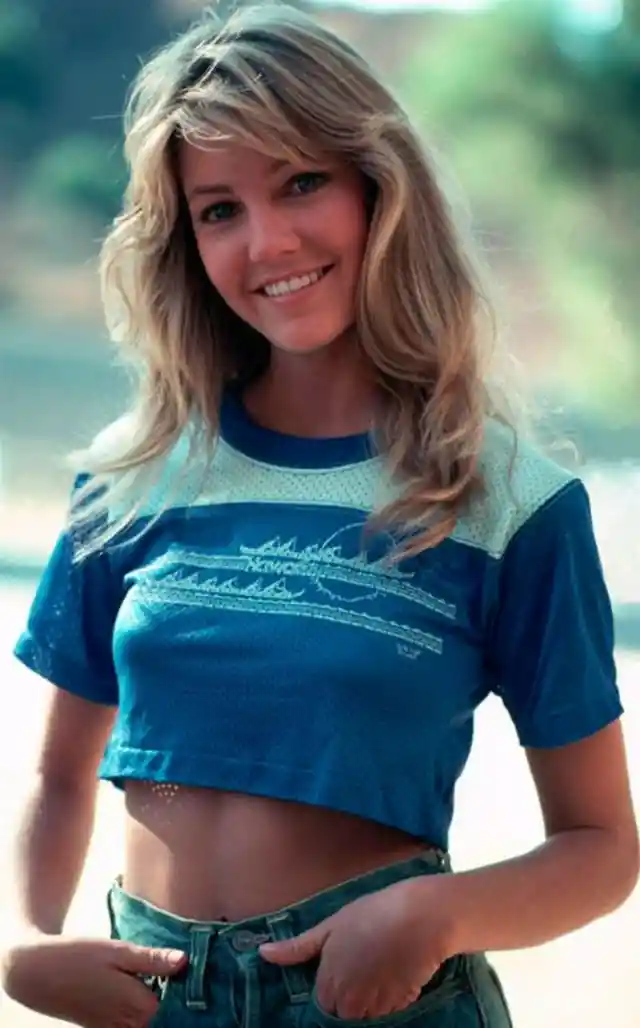
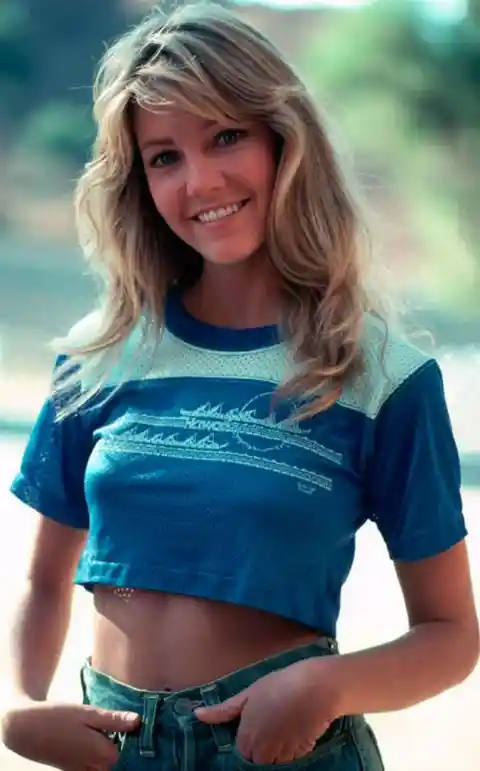
Heather Locklear, with her golden locks and sunny smile, was the quintessential California girl of the '80s and '90s. Modeling was just a college gig until she nailed the role of an unstoppable cop on 'TJ Hooker' and became a household name. Locklear wasn't just another pretty face on TV; she became a titan of the small screen, juggling roles on 'Dynasty' and 'TJ Hooker' while still finding time to grace 'The Love Boat' and 'Fantasy Island.'
Her tireless work ethic wasn't just for show; by the time the '90s rolled around, she had racked up nearly 200 episodes on 'Melrose Place.' Locklear proved she was more than a one-note actress—she was a force to be reckoned with, determined to have it all.
Goldengirl Susan Anton in the 70's

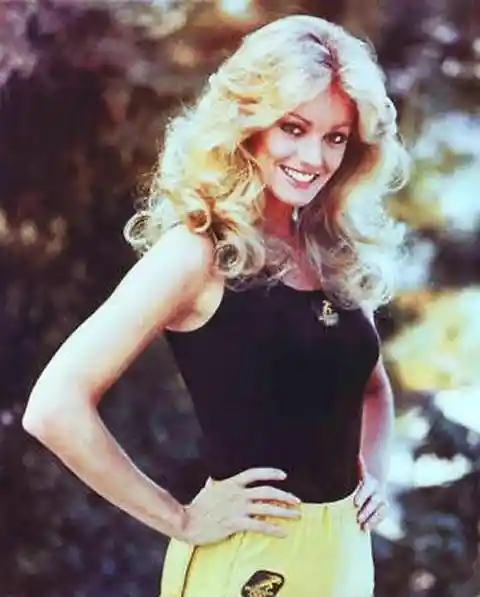
Susan Anton, known for her golden voice and sunny California charm, sang her way into the spotlight with one of the catchiest cigar ads of the '70s. Her star didn't stop rising there; she became a familiar face on TV throughout the '70s and '80s. Yet, the bright lights of showbiz were never on her radar as a kid.
Chatting with Las Vegas Magazine, Anton spilled that her roots as a Southern California girl didn't exactly scream 'future entertainer.' But life has a funny way of unveiling paths we never see coming and for Anton, the stage called despite any plans she might've had.
“ When I was growing up I didn’t have a real plan. I had no idea. I thought I was really going to go to college and just get married and probably be a nursery school teacher... When the Miss Redlands pageant came along there was a talent portion... I had never sung in front of anybody, but I just had a feeling I could do it. I decided to enter that pageant and I won, and that then sent me to Miss California, which sent me to Miss America. I finished second runner-up to Miss America, and so singing onstage in front of an orchestra, and performing for an audience, I realized that this is what I really wanted to do.”
Lovely Jamie Lee Curtis -- Late 1970s
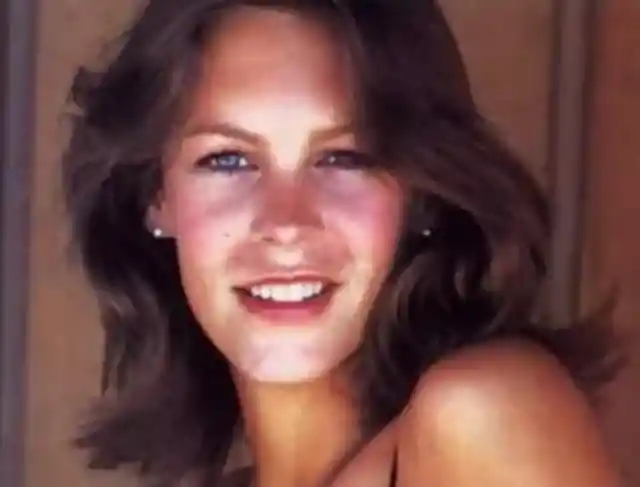

Imagine the upbeat Jamie Lee Curtis, known for her bright disposition, reigning as the scream queen of the '70s. Despite her own aversion to horror flicks, she became the face of fear in classics like 'Halloween', 'Terror Train', and 'Prom Night'. Before she was dodging Michael Myers, landing an acting gig was like finding a needle in a haystack.
Curtis is the first to tip her hat to horror for opening the doors to the acting world she craved. She's quick to credit the genre and its past icons for lifting it to new heights, knowing well that her own shrieks in the dark were part of a legacy that made her a star. She explained:
“ First of all, I wasn’t the first, my god. There were a lot of women in the ‘50s who were doing a lot of screaming. My mother was one of them in the ‘60s. So, I would say I was just a modern, when horror took its center stage, in the ‘70s, I certainly represented that for a nanosecond…”
Rocker Suzi Quatro posing in all leather and boots, 1975.
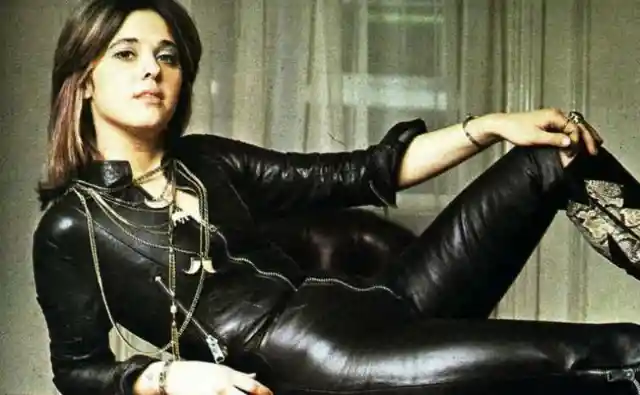

Suzi Quatro, the bass-thumping heart of Detroit Rock City, didn't just walk straight into the limelight—she rocked all the way from the Motor City to international fame, with chart-toppers in England and Australia. Yet, back home in the U.S., she was a hidden gem. That changed when she burst onto the set of 'Happy Days'.
It's a slice of Hollywood legend that 'Happy Days' producer Garry Marshall skipped the auditions altogether. He saw a photo of Quatro as a poster girl on his daughter's bedroom wall and declared, she's the one. Quatro didn't just see this as another notch on her belt; it was her golden ticket to the American dream, finally spotlighting her stateside. She told the AV Club:
“ Everybody knew me. I had fans all over America, but the single success didn’t follow me over. That’s the difference. Then Happy Days came along, and of course, I played Leather Tuscadero, and then it was nationwide television. Number one show—I’m on there doing some of my hits, playing the bass guitar, being me. So I kicked down the door as Suzi Quatro, then I kicked it down again as Leather Tuscadero, who is Suzi Quatro. So however it happened, it happened. It doesn’t make any difference to me. I mean, I sold 55 million records, so I’m not kickin’.”
Deidre Hall may be best known for her role as Dr. Marlena Evans on the soap Days of Our Lives, a role she took on 1976

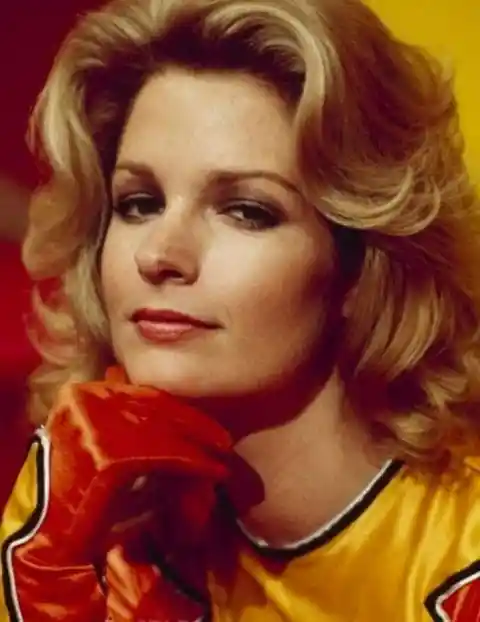
The relentless pace of soap opera filming can seem daunting: lines to learn overnight, scenes to nail before the camera, and the constant pressure to perform. Yet, for Deidre Hall, the beloved star of 'Days of Our Lives', the hustle was part of the charm. She wasn't just chasing lines; she was in pursuit of a family, a troupe of actors to share the daily trials and triumphs. And within the walls of that long-standing show, she found just that—a kinship that made the demanding work not just bearable, but beloved. She told Soap Opera Digest:
“ I was brought in to play a character’s backstory, so I was the reason that Brad had left his hometown and gone on to live somewhere else. What was interesting was, my time there I was sort of the little kid with her nose against the glass, you know, saying, 'This looks like fun and these people rent summer places together and they travel together and I like that and I want to do that.' It could not go forward, but I got a real taste of the kinship that can be had in the daytime when people work together for hours at a time. I wanted some of that.”
Angie Dickinson as Sergeant Suzanne “Pepper” Anderson in the police drama Police Woman broke new ground with its portrayal of a woman in a leading role and as a police officer
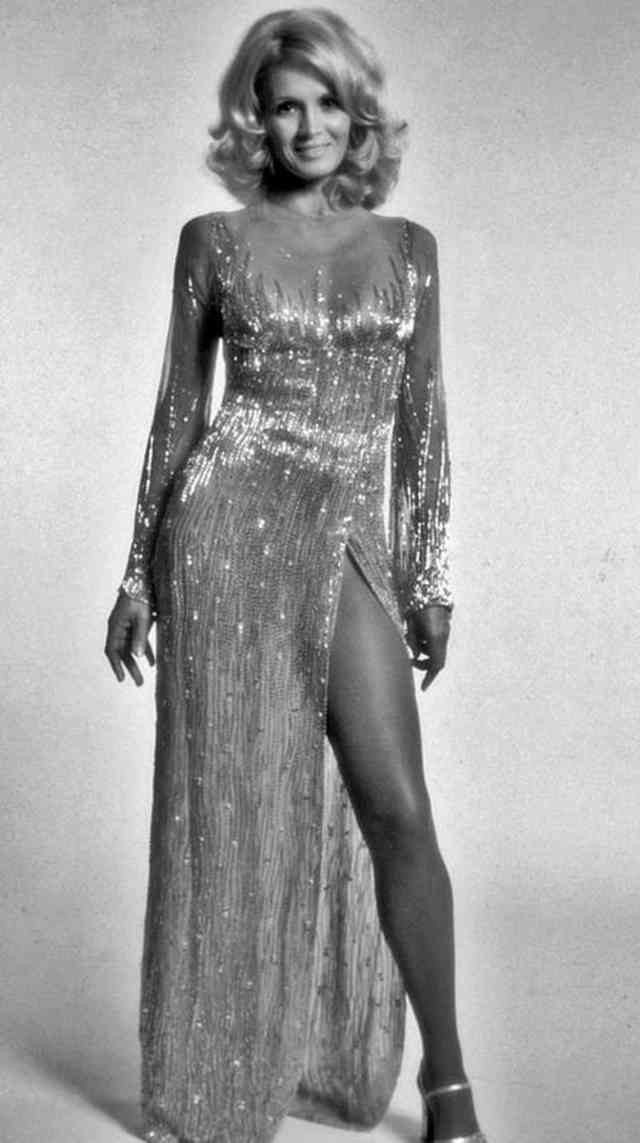
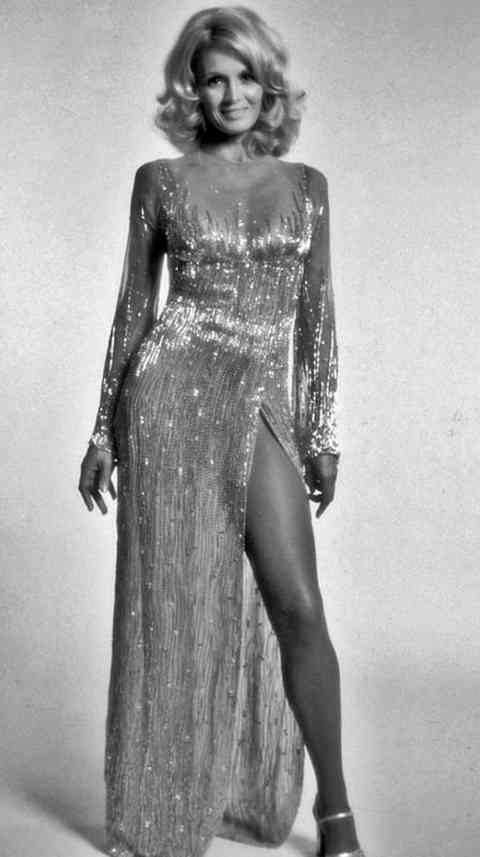
When Angie Dickinson starred in 'Police Woman', she wasn't just cracking cases on screen—she was unwittingly signing up for a role as law enforcement's most effective recruiter. Her portrayal of a capable officer, handling business without waiting for a man to step in, inspired legions of women. Suddenly, police stations across the country saw a surge in applications from women ready to make their own difference.
But while Dickinson was busy becoming an icon of empowerment, she was dodging the label of sex symbol like it was a stray bullet. Sure, she knew she had the looks, but she feared that kind of spotlight might just cap her career's potential. She told CBS:
“ I wouldn't want to be known only as a sex symbol. I wanted to be known as an actress, equally or, even more so. Like Marilyn Monroe. She was known as the greatest – rightly rightly so – sex symbol of all time, Boy, try to do Shakespeare after that!”
Alyssa Milano as 'Samantha Micelli' on the classic '80s sitcom, "Who's the Boss?"
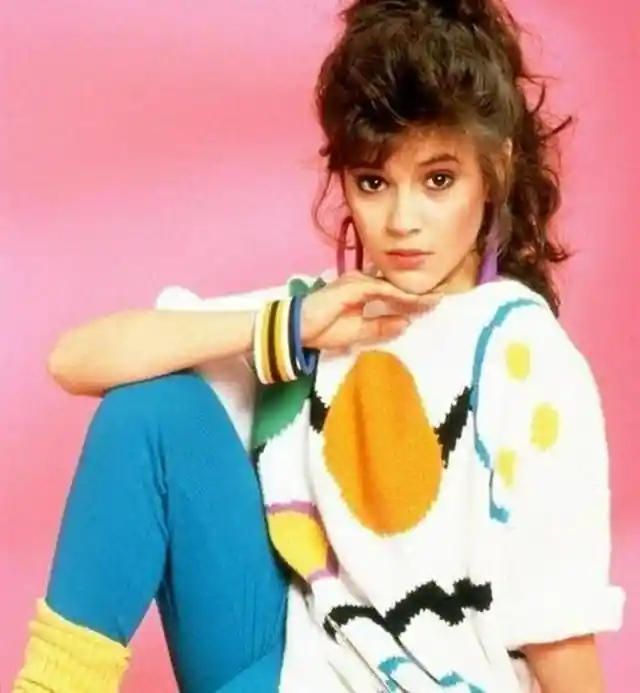
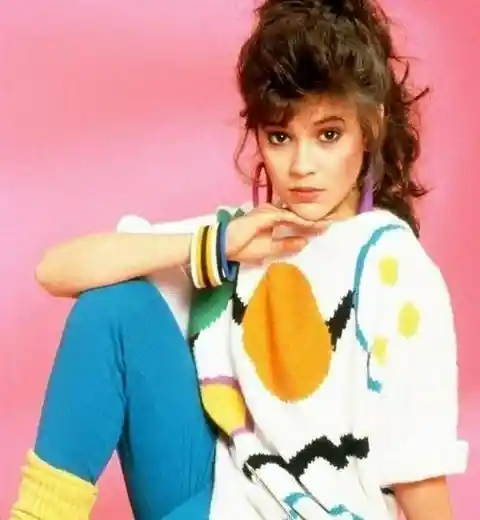
During the '80s, Alyssa Milano charmed us as the darling daughter on 'Who's The Boss?', sharing the screen with Tony Danza and winning hearts with her sweet and sassy role. But did you know she was a hair's breadth away from swapping her sitcom sunshine for goth glam?
Years later, Milano dished out a little-known fact to the Huffington Post: she was in the running for the role of Lydia Deetz in 'Beetlejuice'. The part, that ultimately went to Winona Ryder, could have crowned her as the queen of goth teens. Yet, fate had other plans, and Milano continued to capture fans with her all-American charisma. She explained:
It was between the two of us, and she actually got the part. You always wonder what would have happened differently in my life had that worked out, not that I would want it to be any different, but it’s just an interesting thought game. I was so little. You just hear, ‘Oh, you didn’t get it. Someone else got it — which was hard.
Alexandra Bastedo, a British actress, in the series "The Champions"
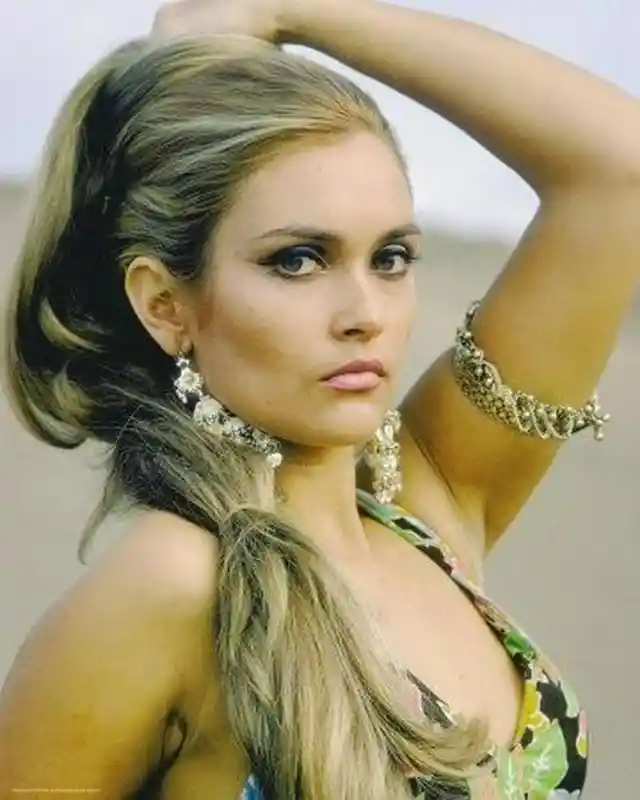
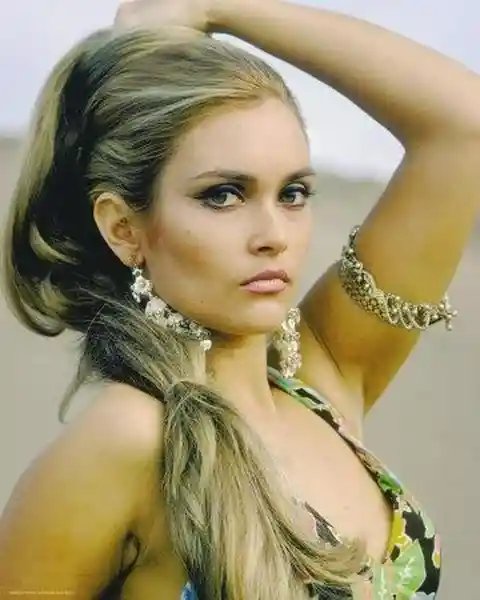
Alexandra Bastedo's story began in the picturesque towns of Essex and Brighton, where she honed her dramatic talents at the Worthing School of Drama. At 16, rather than chasing auditions, she found herself in the spotlight of the Miss Teenage Diplomat competition, outshining 4,000 hopefuls to claim the title.
That victory whisked her away to the glitz of Hollywood with Columbia Pictures, landing her in '13 Frightened Girls!', a gig she remembers for its copious amount of on-screen shrieking. With a movie contract dangling before her, her parents hit the brakes, insisting on a completed education before any further Hollywood escapades.
Bastedo obliged, and once she hit the books, she didn't turn her back on the camera. Post-graduation, she graced TV screens and appeared in the James Bond spoof 'Casino Royale'. While the American dream remained elusive, she became a familiar face on British and Spanish television, proving that education and the limelight can indeed mix.
Stevie Nicks, Hot '70s Queen Of Rock 'N Roll, In Rare Photos
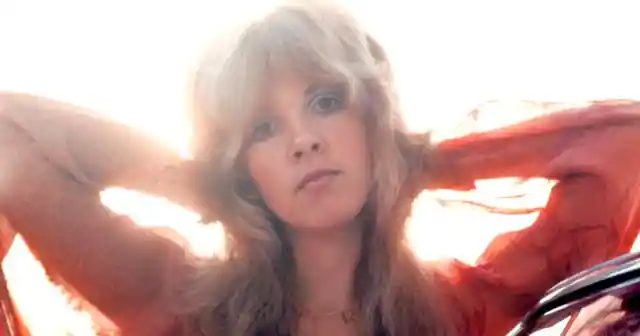
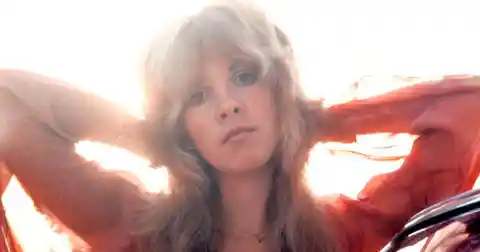
Before Stevie Nicks became the ethereal presence fronting Fleetwood Mac, she was one half of a duo with Lindsey Buckingham, waiting tables, and, under the watchful eye of her mother, hitting the books. It was the band's seminal work, "Rumours," that catapulted her into the stratosphere, weaving her voice into the soundtrack of the era. The album wasn't just a collection of songs; it was a narrative of passion, drama, and yes, rumors, transforming Nicks from a band member to a celestial rock deity.
In a heart-to-heart with Dazed Digital, Nicks shared that her mother was her grounding force, and her career in music greenlit with the condition of completed education. Nicks's journey from student to rock 'n' roll royalty shows that sometimes, the most magical paths in life start with the most mundane steps.
“ [Nick's mother] would say, ‘I know you’re going to be a singer – and I think you’re very good, and I totally support you, Stevie – but you will go to college for five years. You can be in a band, that’s fine, but you’ll go to college because I will not have you stand in a room full of men unable to keep up with them. You are going to be independent.’ I thank God for my mum. Talk about pragmatic.”
Supermodel Christie Brinkley, 1978.


Christie Brinkley isn't just a name that echoes through the halls of the modeling world; she's a trailblazer for Sports Illustrated cover models who've carved out successful careers beyond the runway. She didn't just ride the wave of fame; she became its crest, redefining the very essence of a model's life.
But there's more to Brinkley than dazzling smiles and magazine covers. With an artist's spirit (ignited during her art studies in Paris), she now pours her creativity into pottery and sculpture, with a special affection for shell art. In a heart-to-heart with the New York Times, Brinkley shared her passion project: crafting beauty from the shards of broken ceramics. It's this blend of beauty and creativity that continues to define her remarkable journey.
“ I have piles of broken plates. I envision making a work of art with them. I have to say, I keep everything that breaks.”
Pam Grier - From 'Foxy Brown' And 'Coffy' To 'Jackie Brown'

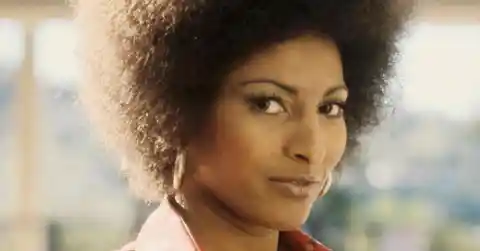
Pam Grier, a name that resonates with strength and charisma, didn't just act in films—she carved an entirely new genre with her roles in 'Foxy Brown' and 'Coffy'. She wasn't content to stop there, though. Moving into the '90s, Grier gave us a performance in 'Jackie Brown' that could only be described as soul-stirring.
In a candid chat with the New York Times in 2019, Grier reflected on her career with the insight only she could offer. She mused that had she not been a woman, her groundbreaking work might not have been boxed into the "blaxploitation" category. Her influence stretched far beyond, shaping an era of film in ways only Pam Grier could.
“ It wasn’t called blaxploitation until I put my feet in the men’s shoes. Men had done the same type of formulaic films before I did. It wasn’t until I stepped in their shoes that they said, 'Well, these movies are for a black audience.' I was creating the market for films about women fighting back and using sexuality.”
"Dreamland" -- Sophia Loren on a visit to Disneyland in 1963
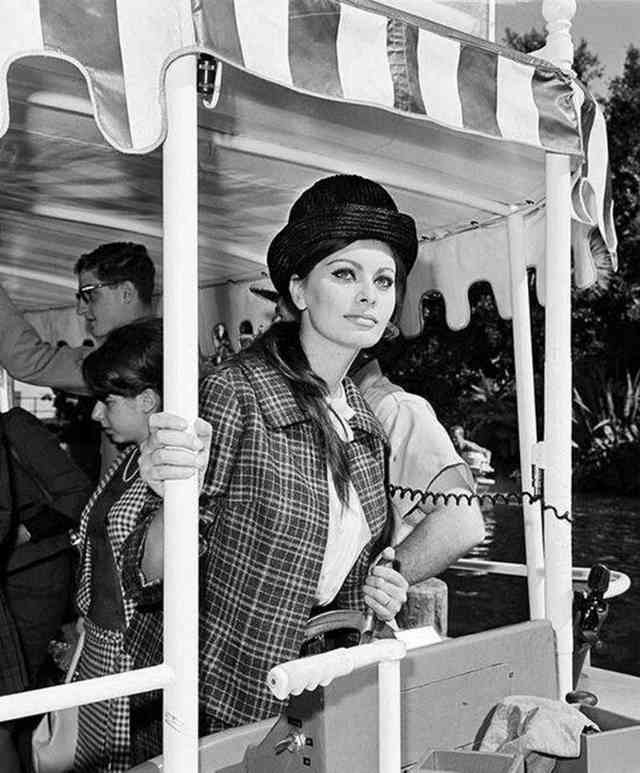
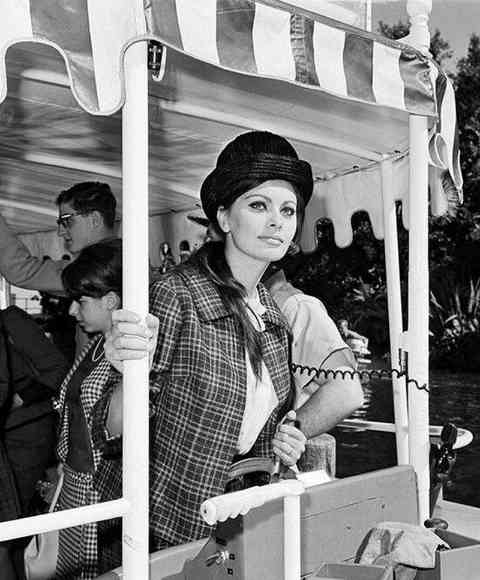
Sophia Loren didn't need a magic wand to experience Disneyland like royalty. Fresh from her Oscar win for 'Two Women' in 1962, she got the red carpet treatment at the Happiest Place on Earth. With her husband, famed film producer Carlo Ponti, by her side, they slipped past the long lines, entering rides through the exits like true VIPs.
Her guide from that unforgettable day shared that Loren, in her high heels, glided across the park with effortless grace, not once faltering, and left as radiant as she arrived after two hours of enchantment.
The groovy and pretty Sharon Marie Tate, 1960s
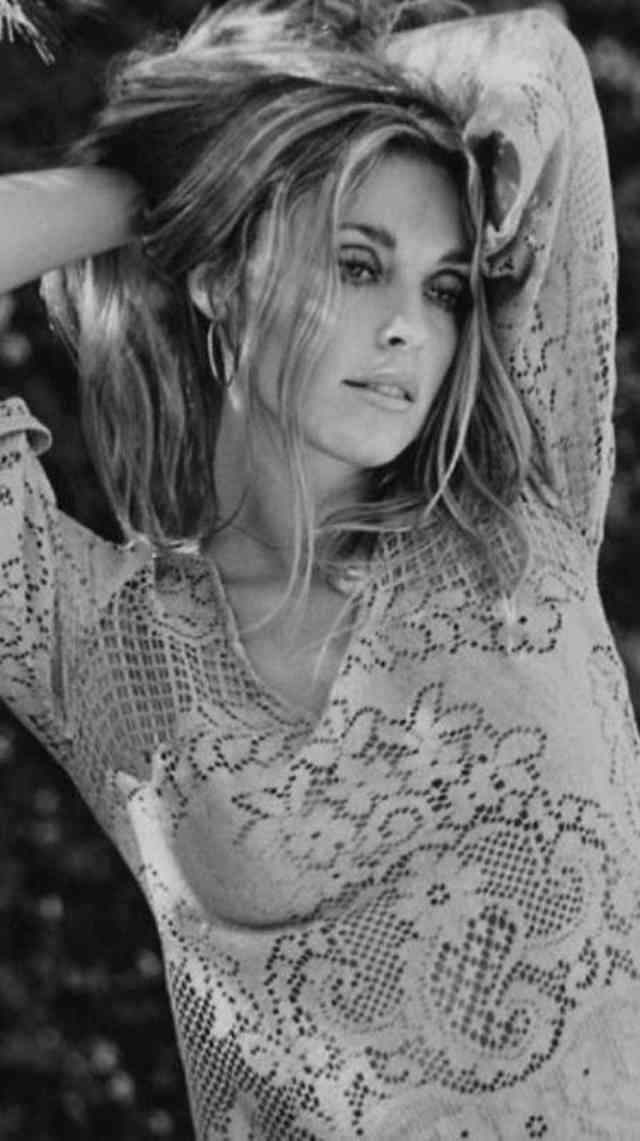
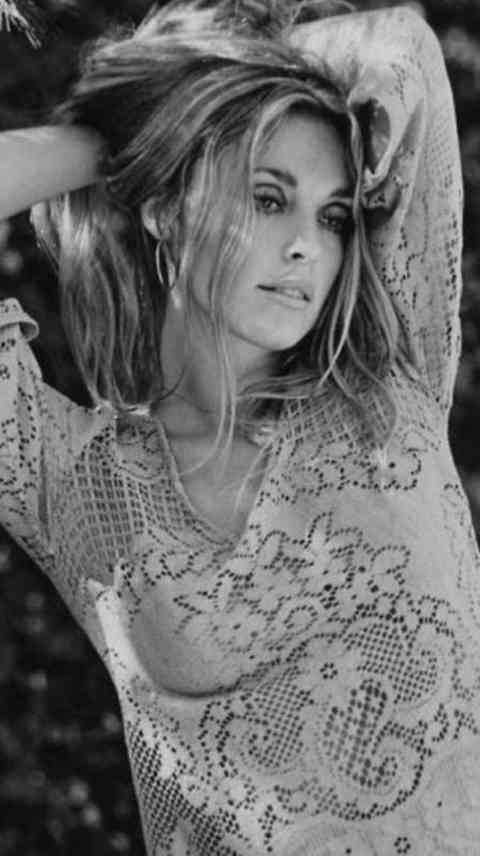
In the 1960s, Sharon Tate was the epitome of a rising star. Her stunning presence was so distracting that she once appeared on television disguised in spectacles and a wig, just so her beauty wouldn't overshadow the show. Audiences were captivated, regardless of the disguise or the typical blonde roles she was given.
Tragically, her light was extinguished in the summer of '69, leaving her etched in history as a tragic figure of glamour and the end of an era.
Actress Susan Dey, 1972
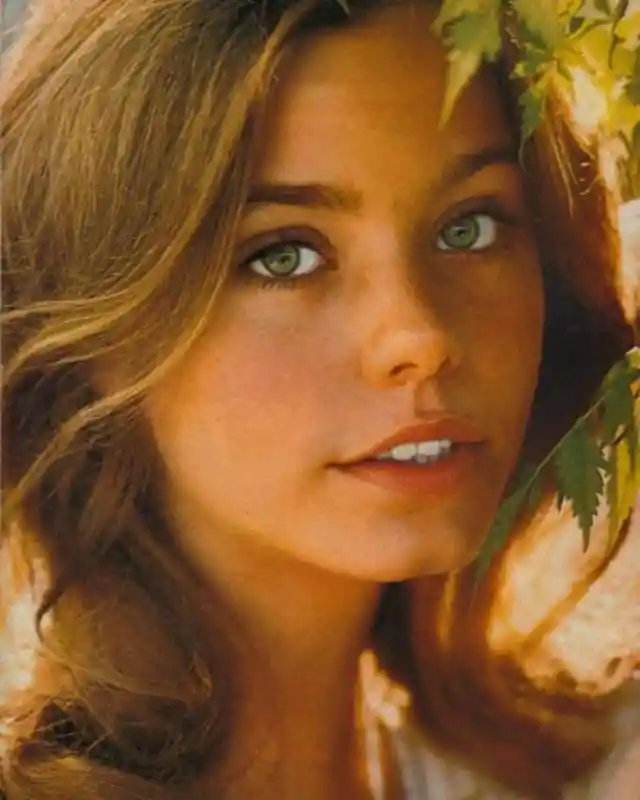
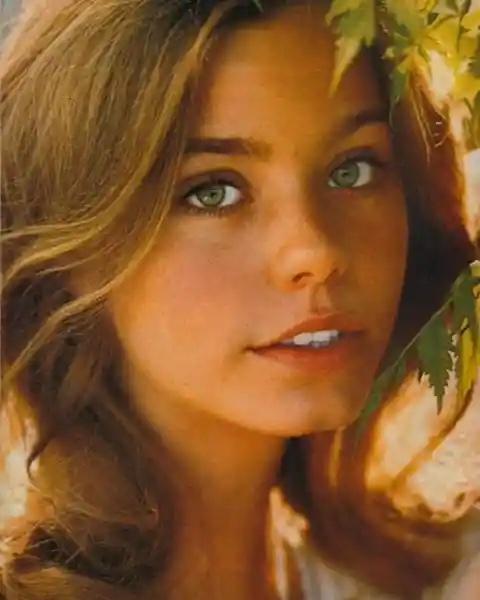
Susan Dey, the beacon of beauty on 'The Partridge Family', was more than just a crush for the boys of the '70s—she was a full-blown teenage dream. Behind the scenes, her heart fluttered for co-star David Cassidy, a secret crush that bloomed quietly throughout the show's run.
It wasn't until later that this tender detail of her on-set life emerged, a story she's held close ever since, rarely revisiting her days on the iconic series.
Michelle Pfeiffer in "Grease 2" 1982.
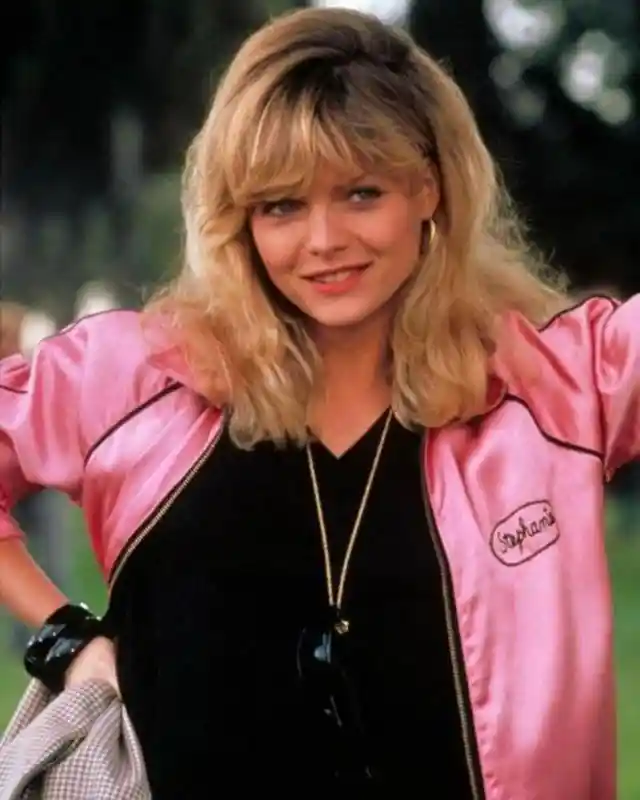
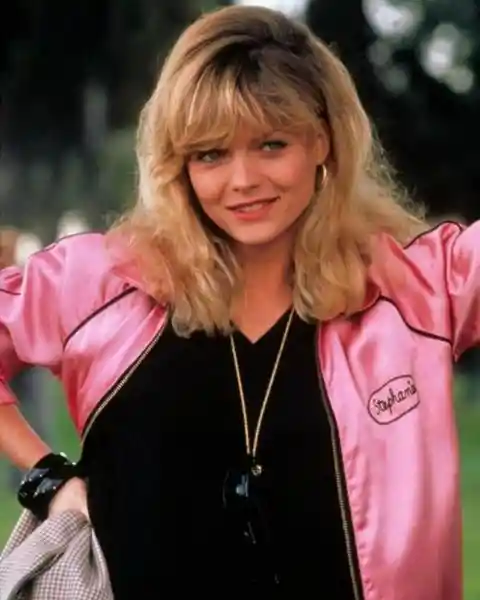
Michelle Pfeiffer, in her early days, almost missed her shot at the role in 'Grease 2', a sequel that dared to follow a classic. The film, quirky with its mystery biker and all, was a far cry from its predecessor, yet Pfeiffer dove into her role, showing early signs of the star she would become. It was a fluke audition she recounted to James Corden, one that thankfully went her way. She explained:
“ I went on a lark. My agent said, ‘Oh just go.’ I wasn’t a dancer, I wasn’t a singer, and I was in this short purple skirt with go-go boots and we had the dancing auditions... I kept sneaking in the back and finally, it was only me.”
Marilu Henner In The '70s For Playing Elaine O'Connor Nardo on the TV show Taxi

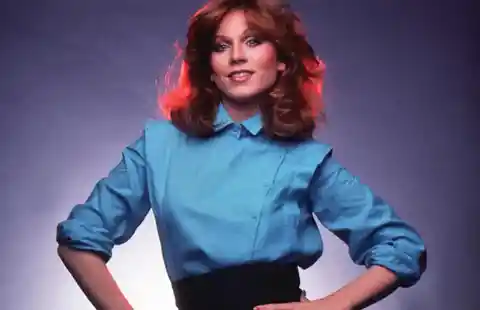
Marilu Henner wasn't just another face in the crowd; she was part of the 'Taxi' family, navigating through the boyish antics of one of the most beloved sitcoms ever. The show wasn't just about the laughs—it was a comedic revolution. And in the mix was Andy Kaufman, taking a break from his usual antics to deliver a surprisingly "normal" performance.
The tales of Kaufman often paint him as the eternal prankster, but Henner recalls a different side. She shares that despite the chaos that seemed to follow him, Kaufman was all about sweetness and professionalism when the cameras rolled. She explained:
“ Andy was nice. He had like 7 out of 13 [episodes] so he wasn’t in every episode. And he didn’t come in on Mondays, he came in on Tuesdays. Mike Binder would come in and read the Andy parts. And what happened was he’d come in Tuesday for the afternoon run-through, they’d walk him through. The script was always written in English and he would do his Latka gibberish and you felt like you understood him after a while. Then he’d come in on Friday [tape day]. So he had a very truncated schedule.”
A young and groovy Helen Mirren, 1960s.
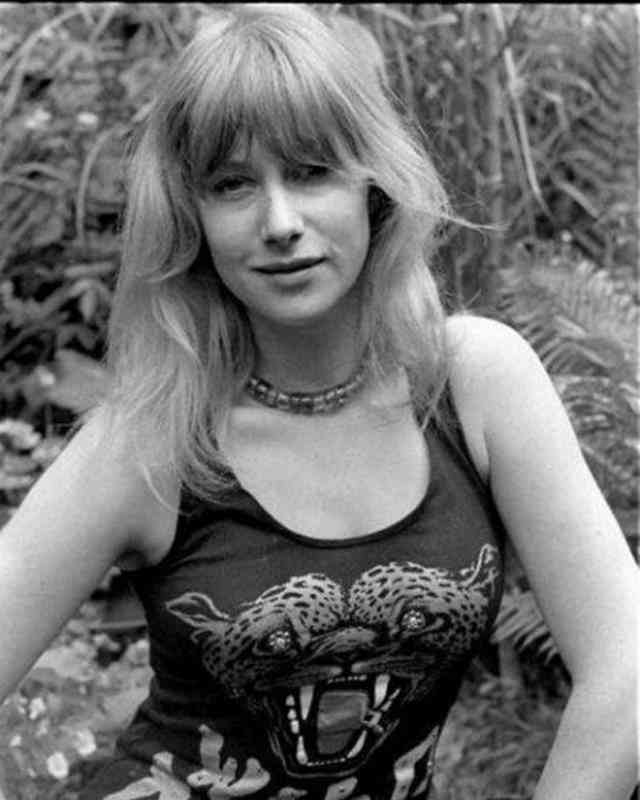

Helen Mirren's allure transcends the decades, from the vibrant '60s to her sharp-witted roles in blockbuster hits like 'Fast and the Furious'. She's a force that demands attention, effortlessly commanding the screen with a presence that's as undeniable as it is elegant.
But if you're thinking of complimenting her as "beautiful," think again. Mirren doesn't care much for the label, and she doesn't think it fits her—or most people, for that matter. Chatting with the Guardian, she articulated her thoughts on the word, suggesting it's a term that's perhaps too casually bestowed and not quite apt for the reality of our diverse world.
“ I hate that word. Kate Moss is beautiful, so is David Beckham, and I can appreciate a beautiful girl walking down the street. Young is beautiful. But the majority of us are something else, and I wish there was another word for it.”
Catherine Deneuve was known as a French beauty
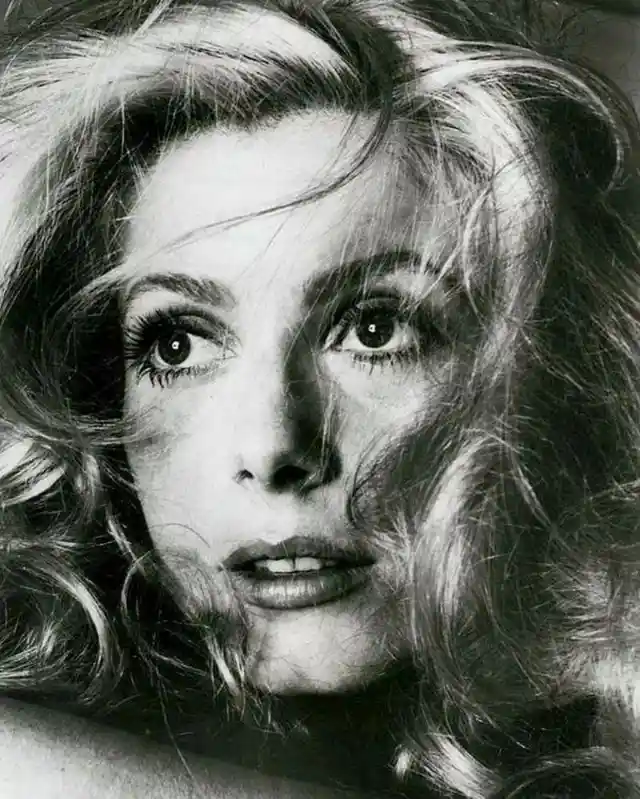

Catherine Deneuve isn't just France's cinematic gem; she's a multifaceted marvel who sings, models, and champions political causes. Juggling all these with what seems like ease, she's a powerhouse of talent.
With an impressive roster of over a hundred films, singling out one that encapsulates her essence is tough. Yet, 'Repulsion' from 1968 stands out. In this psychological thriller, Deneuve draws us deep into the psyche of a woman grappling with her unraveling mind. She reminisces that the set of 'Repulsion' was like a mini United Nations, a melting pot of cultures. Yet, it was her, director Roman Polanski, and screenwriter Gérard Brach who formed the French-speaking trio, their camaraderie akin to the Three Musketeers. Surrounded by a predominantly British crew, they carved out a 'French bubble,' crafting the film with a distinctive flair, a testament to Deneuve's unique path through cinema.
"Europe or bust!" 1975 campaign -- British model Beverley Pilkington

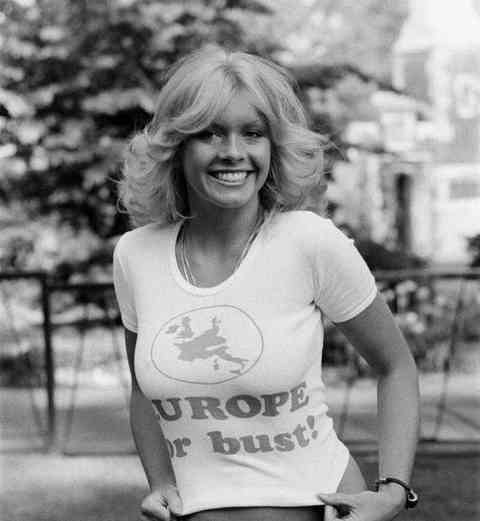
Back in '75, England was buzzing with one big question: to stay in the European Community or to go it alone. The nation was torn, debating whether to weave tighter with Europe or to stake out solo on the global stage.
Cue the 'Europe or Bust' campaign, with its clever spin on the free-spirited vernacular of the hippie era. They knew the power of a message, especially when delivered by a bevy of beauties donning campaign tees. Love or loathe the idea of England in the EC and later the EU, it's hard to deny—having a message spread by charming ambassadors is a stroke of strategic genius.
Barbi Benton, 1970s
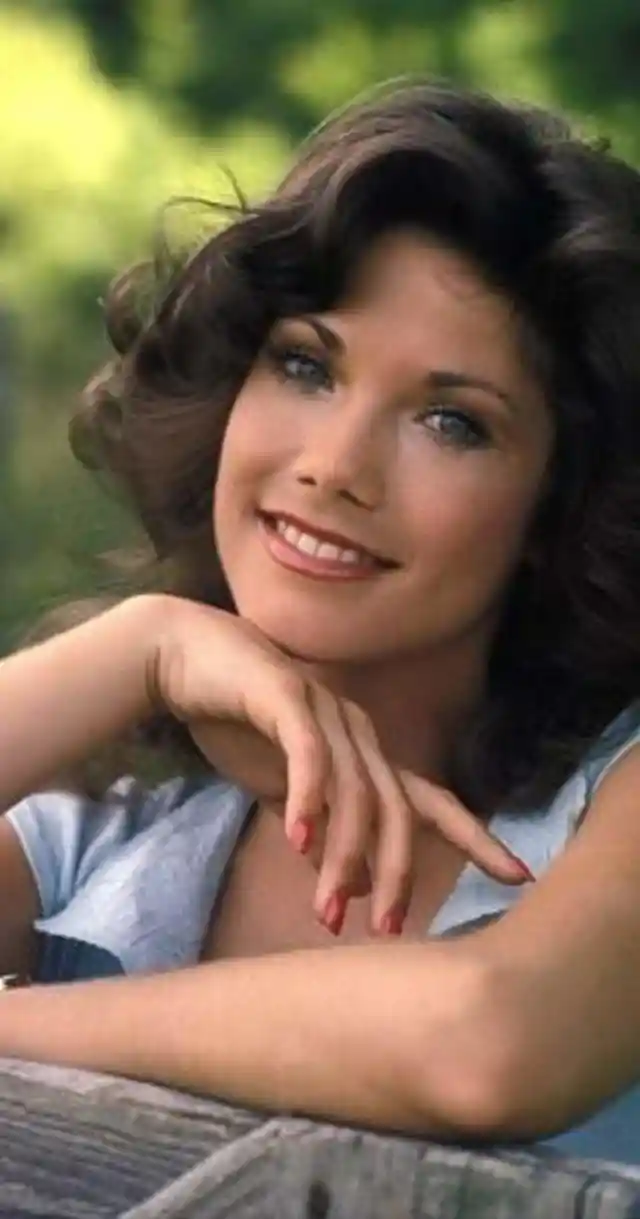
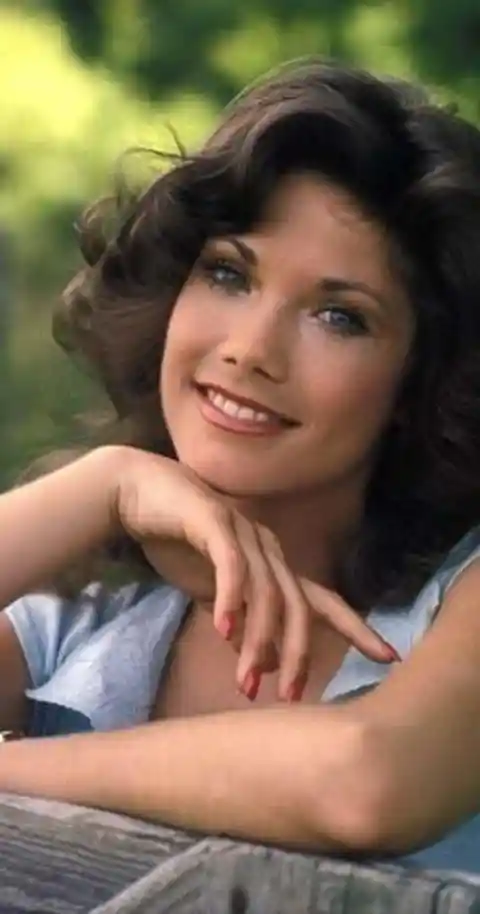
Barbi Benton, a charismatic presence, made her mark on the vibrant 1970s television circuit. After starting her career with Hugh Hefner, she embarked on a dual journey as a singer and actress, propelling herself to stardom. While charming audiences on country albums like "Barbi Doll" and her self-titled record, she also graced the screens for four seasons of Hee Haw. Her appearances on popular shows like The Love Boat and Fantasy Island further solidified her rising star status. Though her discography might not have boasted chart-topping hits, her enduring career in show business until the late '80s remains commendable. An everlasting love for this groovy beauty is etched in our hearts.
Anita Ekberg was another smoking hot, curvy, blond that captured audiences’ attention in films!
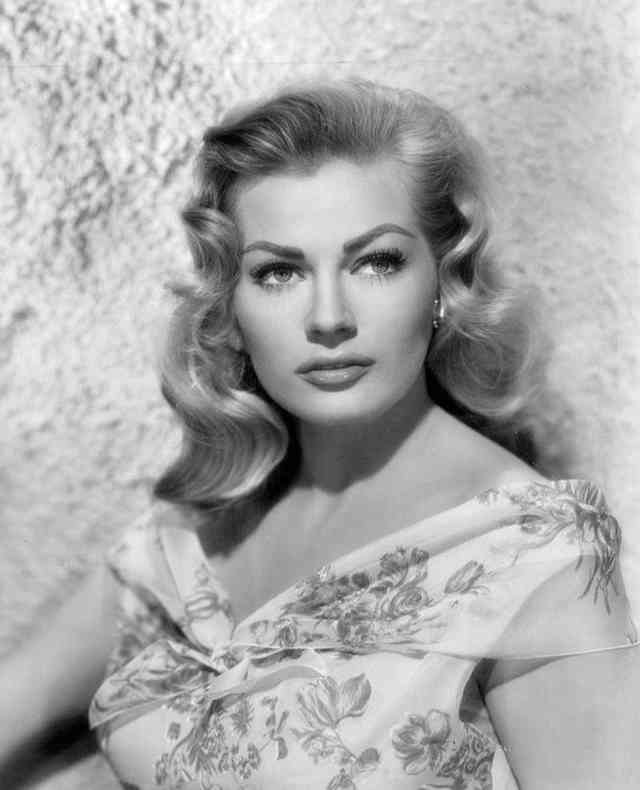
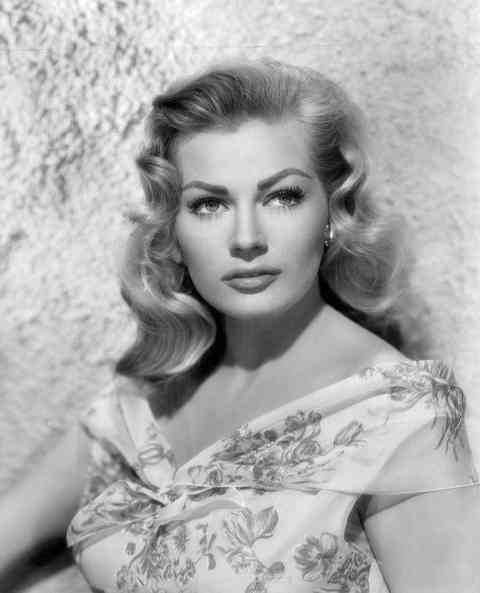
Hailing from Scandinavia, Anita Ekberg remains one of the most enigmatic beauties of the 20th century. Her journey to fame commenced with her participation in the Miss Sweden pageant, eventually leading her to the Miss Universe contest. While she didn't claim the Miss Universe crown, Universal Studios recognized her allure and offered her a contract, resulting in appearances in films alongside luminaries like Abbott and Costello. Interestingly, during her early Hollywood years, Ekberg confessed that she preferred spending time with horses rather than attending drama lessons. Frankly, who wouldn't understand that sentiment?
Farrah Fawcett as Holly in the 1976 film Logan's Run.
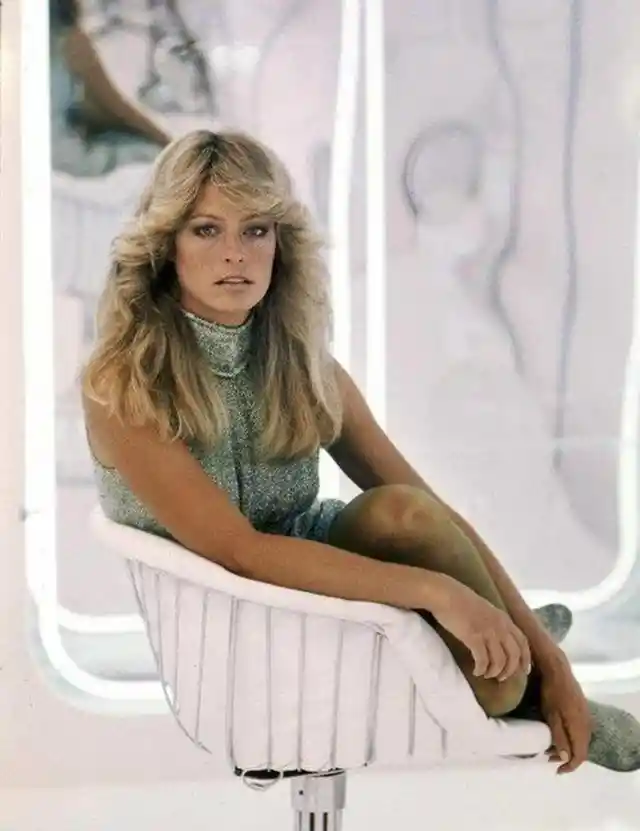

It's mind-boggling to imagine Farrah Fawcett in 1976's Logan's Run. Not because she was a rarity as an American in this distinctly English sci-fi masterpiece, but because it was the same year she became a global icon. The producers of Logan's Run couldn't have foreseen her meteoric rise to fame, leaving her with a brief appearance as a futuristic beauty who vanishes from the film. While Fawcett had already embarked on a burgeoning television career stateside, her role in Logan's Run failed to harness the true star power she possessed. Premiering just preceding Charlie's Angels, this oddity remains a fascinating chapter in Fawcett's '70s legacy.
Claudia Cardinale, a beautiful Italian actress of the 1960s and 1970s
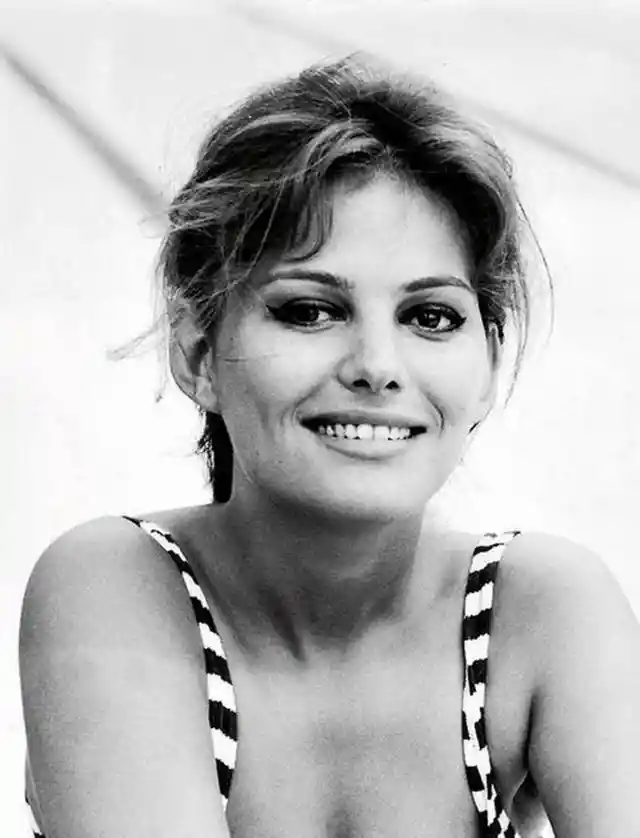
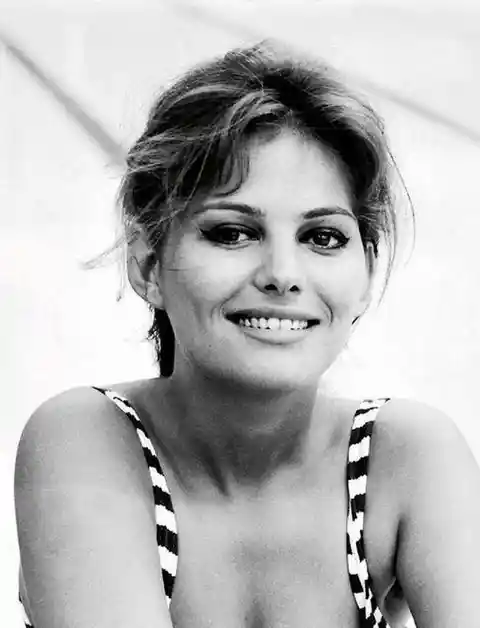
In the mesmerizing 1960s and '70s Hollywood scene, a multitude of stunning European actresses captivated audiences. Among them, Claudia Cardinale gained recognition through her role in Fellini's 8 1/2. However, by the late '60s, she started gaining American cinema, embodying glamorous and enigmatic women from across the seas. Yet, Cardinale had other intentions. Fearing typecasting, she made the bold decision to return to Europe. As fortune would have it, this move opened doors to an abundance of roles she had never dreamed of. Cardinale's unwavering commitment to her ideals, combined with her timeless beauty, continues to leave us awe-inspired.
Danish actress Annette Stroyberg, 1960s

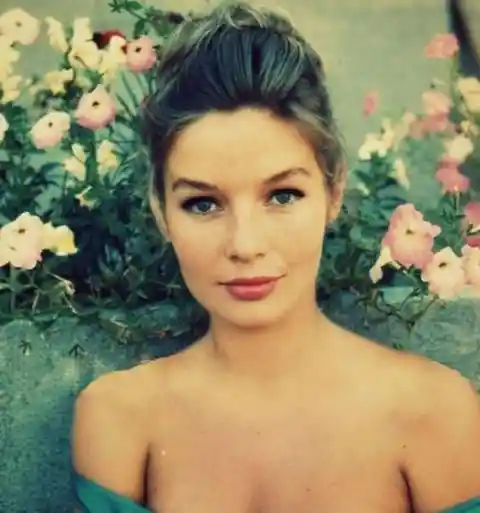
Annette Stroyberg's allure and talent made her one of the most enchanting figures in European cinema. While she is often remembered as one of director Roger Vadim's former flames, her own journey is worth exploring. After stepping away from acting in the early '60s, she embarked on a life of adventure, traveling between America and Europe until her passing in her native Denmark in 2005.
Dorothy Dandridge was the first African-American actress to be nominated for an Academy Award for best actress in 1954, for her role in "Carmen Jones"
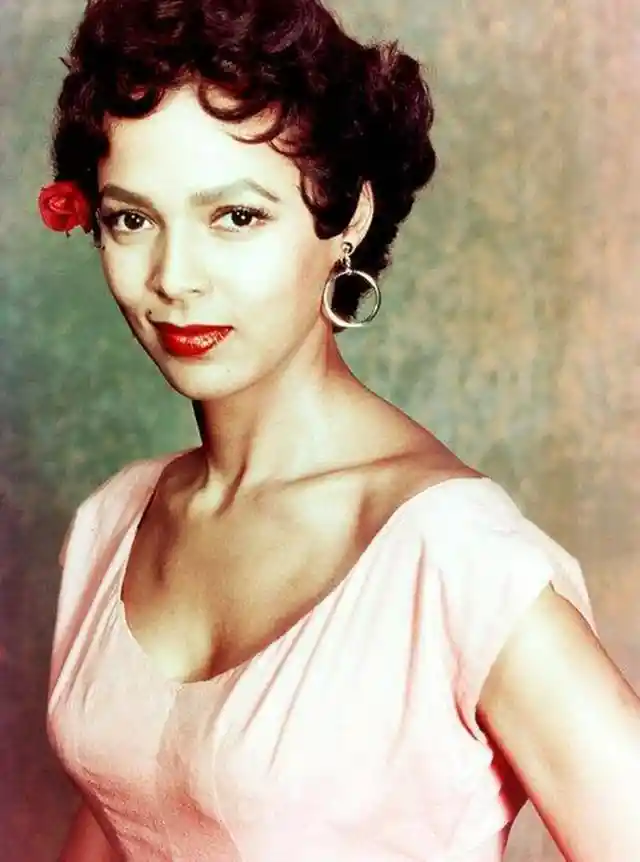
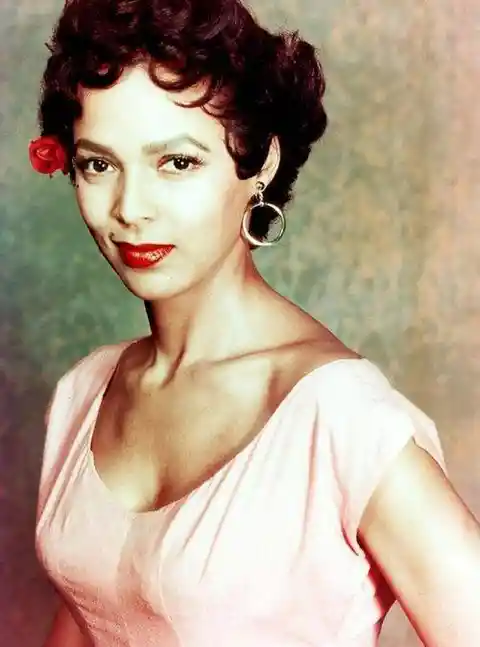
Dorothy Dandridge stands as one of the most impactful actresses of the 20th century. Starting her career at iconic venues like the Cotton Club and the Apollo Theater, she soon made her way to the big screen. Her role in the film adaptation of "Carmen Jones" earned her enormous acclaim, including a Best Actress nomination at the Oscars in 1954, marking a groundbreaking moment for African-American actresses.
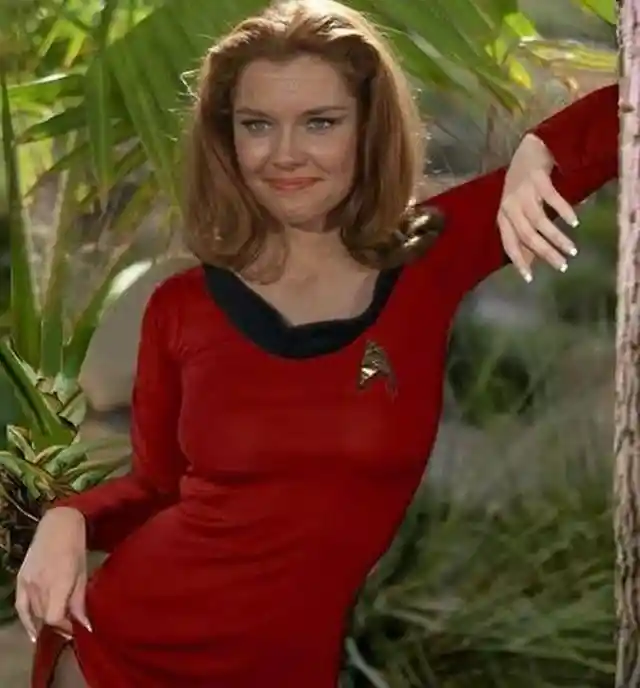
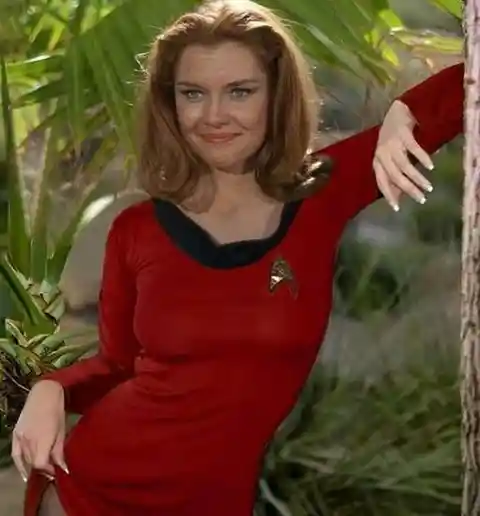
While Yeoman Banks only appeared in a single episode of Star Trek, her presence remains etched in the hearts of fans. Her appearance in the beloved episode "Shore Leave" solidified her enduring connection to the series. Prior to her Star Trek role, Banks had gained recognition through promotions as Miss Rheingold, but it was her portrayal of the saucy starship worker that etched her name into science fiction convention history.
Farrah Fawcett was the '70s golden girl!
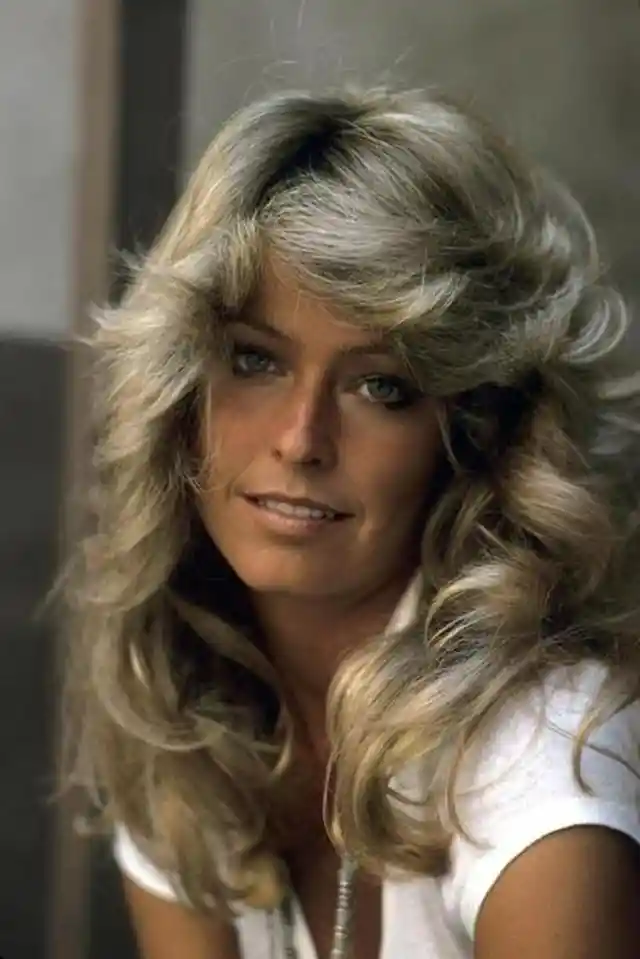
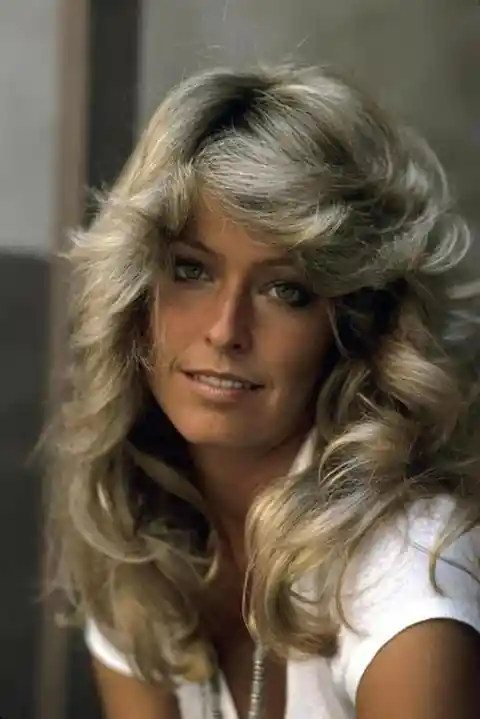
When it comes to the emblematic stars of the 1970s, none shine brighter than Farrah Fawcett. With her radiant smile and signature flowing locks, she dominated the era with her roles in both film and television. But it was a poster, featuring Fawcett's million-dollar grin and her self-styled red swimsuit, that elevated her status to legendary. Crafted by Fawcett herself, the poster became a cultural phenomenon, forever capturing the essence of the '70s.
Jaclyn Smith in the early 1970s
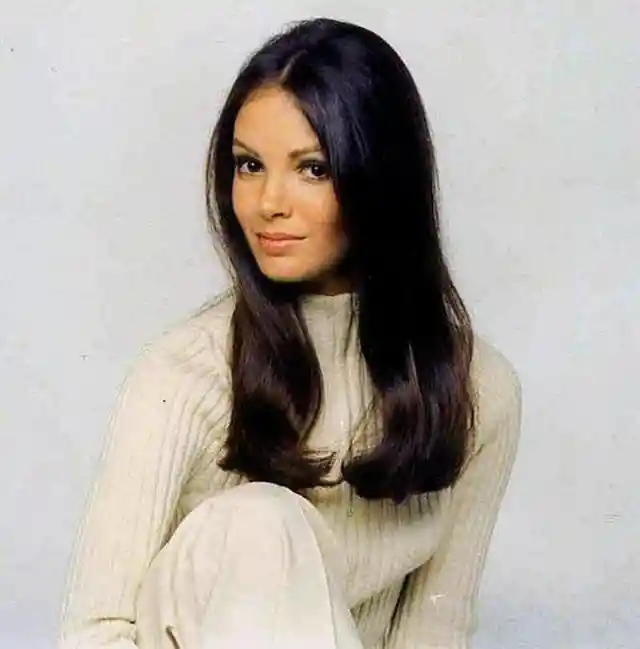

As I delve into Tanya Roberts' story, let's go back to her time on the iconic show, Charlie's Angels. What many may not know is that Roberts and her fellow angels had to take matters into their own hands when it came to hair and makeup. It was a lesson in penny-pinching and resourcefulness that would shape the way she viewed the world. Beyond her angelic role, Tanya Roberts proved to be a star with many dimensions. In addition to captivating audiences on the small screen, she ventured into the realm of fashion. With her own clothing line at K-Mart, she understood the importance of providing quality products at affordable prices. Roberts exemplified the notion of offering the most bang for your buck.She explained:
“ It was always about the trio on that show. We all went to work in a motor home. We all put hair dryers on. It was all about hair. The best thing about Charlie’s Angels was the show and the bonding. We lost David Doyle and we lost John Forsythe and we lost Farrah [Fawcett]. It’s hard to go back. You miss those people. It’s hard.”
Jan Smithers, who played 'Bailey Quarters' on the TV show "WKRP in Cincinnati" started off her career as a model in 1966.
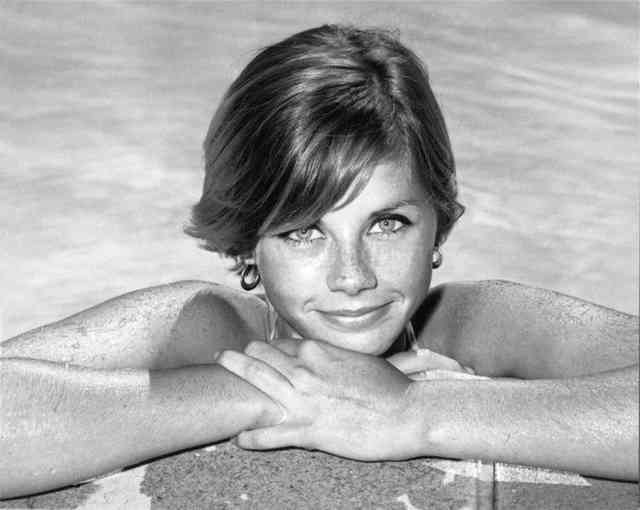
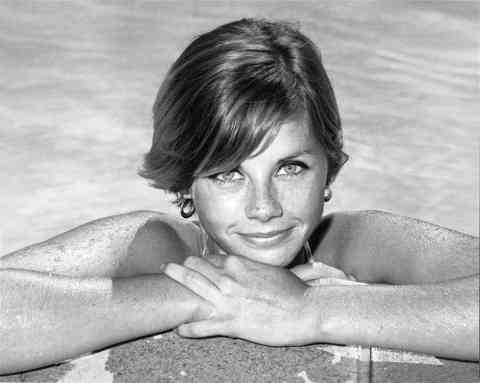
A Serendipitous Start and Tenacity Pays OffBorn and raised in Los Angeles, Jan Smithers initially struggled to find her true calling. Despite her passion for art, she didn't see herself as a painter, and her academic performance was nothing exceptional. However, fate took an interesting turn when she graced the cover of Newsweek at the age of 16. Suddenly, offers from managers and agents flooded in, propelling her forward.
Driven by ambition, Smithers and her mother faced the challenge of finding an agent, often resorting to sleeping in their car. Their unwavering tenacity eventually paid off when, in 1974, she landed a starring role in the film "Where the Lilies Bloom." This experience set the stage for her significant role in the beloved TV series "WKRP in Cincinnati." While Jan Smithers may no longer be in the limelight, she has found solace and serenity in her daily life. According to her, most of her days are now dedicated to finding tranquility through the practices of meditation and yoga. These mindful pursuits enable her to navigate life's challenges with a calm and balanced outlook.
Joan Jett of the 'The Runaways' performing on stage, 1977.
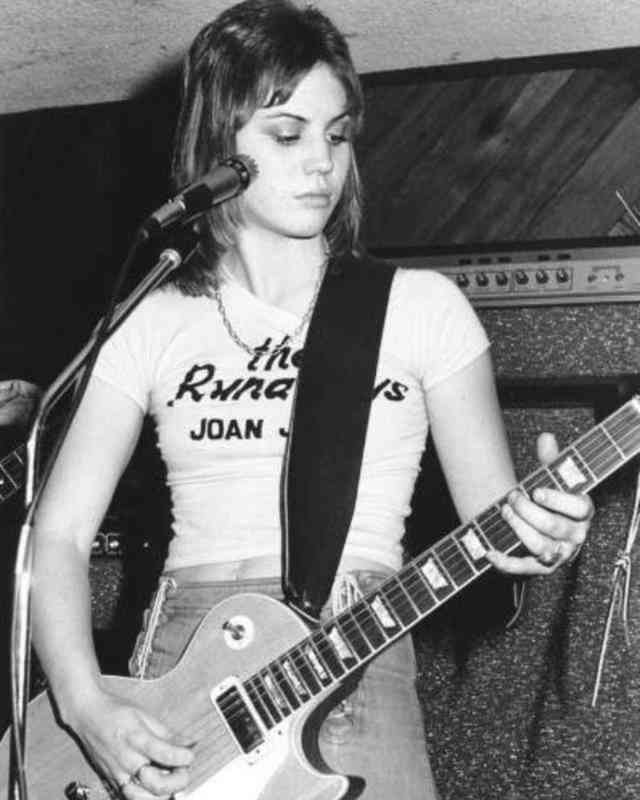

In the world of rock and roll, Joan Jett's impact cannot be understated. As a member of 'The Runaways during the '70s, she played a vital role in breaking barriers and redefining expectations in a male-dominated industry.
With The Runaways, Jett fearlessly challenged the status quo, merging elements of punk and glam to create a distinct and groundbreaking sound. Their all-female lineup was revolutionary for its time, challenging societal norms and stereotypes. Despite facing resistance, even in something as basic as finding guitar lessons, Jett refused to let anything hold her back. She told Interview Magazine:
“ The guy brought out sheet music and tried to teach me 'On Top of Old Smoky.' That was the last lesson I ever took. Being told that girls can’t play rock ‘n’ roll-I mean, even as a kid, it was so illogical to me’s like, what do you mean? That girl can’t master the instruments? I’m in school with girls playing cello and violin and Beethoven and Bach. You don’t mean they can’t master the instrument. What you mean is they’re not allowed.”
Madolyn Smith: From Urban Cowboy to Family Life

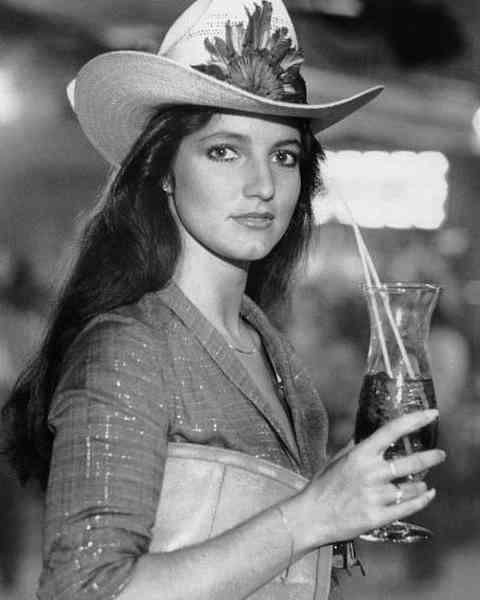
Step into the dazzling world of Madolyn Smith, the radiant brunette who caught our attention with her debut role in the iconic film "Urban Cowboy," where the worlds of country music and disco collided in perfect harmony.
While "Urban Cowboy" became an instant classic and continues to captivate audiences, Smith's film career didn't reach great heights after 1980. Nevertheless, she graced our screens in a series of compelling television films and made memorable appearances in shows like "Cheers" and "Trapper John, M.D."
After tying the knot with NHL player Mark Osborne, Madolyn made the heartfelt decision to retire from acting and embrace the joys of family life. And we couldn't be happier for her!
Mary Wallace: Shattering Glass Ceilings, One Bus at a Time

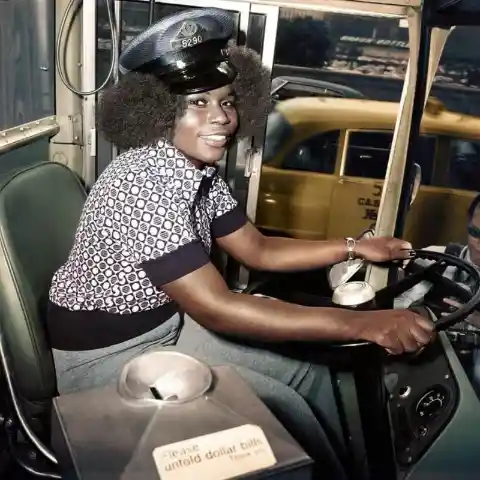
In a world where progress should be the norm, it's astonishing to learn that until 1974, Chicago had no female bus drivers. Mary Wallace, an indefatigable soul, faced not only dismissive attitudes but also mockery when she inquired about a job as a bus driver. The authorities at the CTA even claimed there were no facilities suited for her!
Undeterred by these barriers, Wallace persisted, tirelessly calling and advocating for her rightful place behind the wheel. Finally, in June 1974, the CTA relented and granted her the opportunity to drive the State Street bus. For the next 17 years, she fearlessly maneuvered her way through the bustling city, creating history and even gaining attention in the local papers. Truly mind-boggling!
What makes Wallace's journey even more inspiring is the impact she had beyond her career. In her groundbreaking role, she opened doors for other women and minorities to pursue similar opportunities within the CTA. As she aptly put it, "When I opened this door, it opened up a whole lot of opportunities." Kudos, Mary!
Meryl Streep takes public transportation

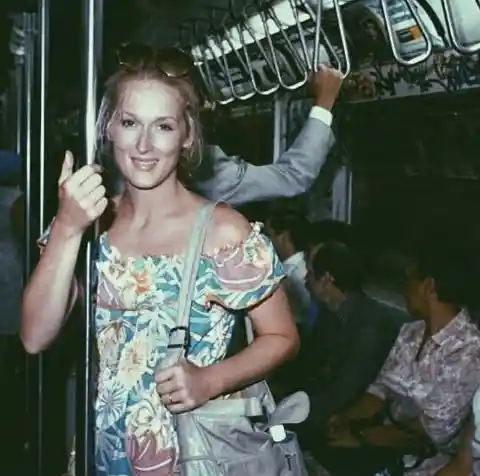
Enter the extraordinary world of Meryl Streep, an actress of the 20th century like no other. She possesses a remarkable ability to not only step into the shoes of a character but to breathe life into them, making audiences believe they are witnessing something truly organic and real.
Contrary to common belief, Streep's sublime talent wasn't bestowed upon her at birth. Rather, she honed her craft diligently while studying at Yale, where she acquired the skill of unearthing the emotional depths of a character, unleashing their authentic reality on the big screen. She explained:
“ Out of necessity you gathered your tools rather quickly. The value of the education was in its eclecticism. Good acting is the way we introduce ourselves to others, the way we discover people at a party. I love actors who don't let the audience objectify their characters.”
Pam Grier was the epitome of Groovy, 1970s.
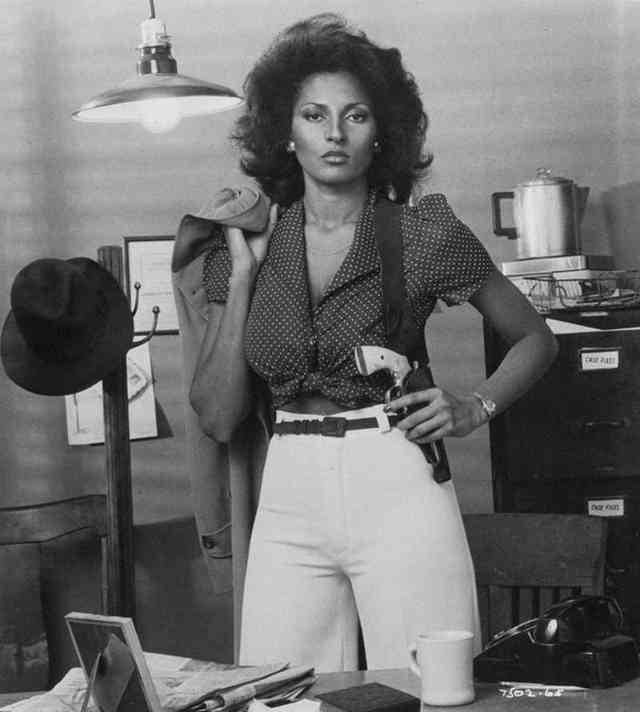
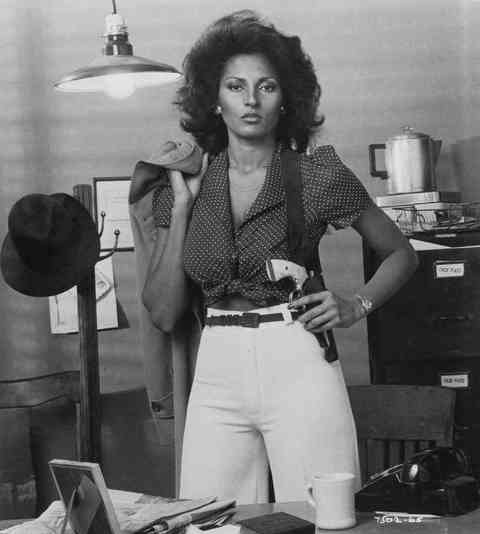
There's just something about Pam Grier that you can't help but be drawn to. As an actress, she possesses a certain rawness that captivates millions of viewers, without even consciously trying. She effortlessly embodies the epitome of coolness, radiates a captivating foxy charm, and exudes an attitude that's both alluring and intriguing.
When asked what sets her apart from the rest of Hollywood, Grier humbly shared her secret. It's her unwavering commitment to sinking her teeth into every role she takes on, whether it's a Quentin Tarantino masterpiece or a Roger Corman production. She grabs hold of the material and never lets go, breathing life into each character she portrays.
“ Once I started learning real theater, and they realized I raised the attitude of a B-Movie to Strasberg, to Robert De Niro, to Neighborhood Playhouse, the Method in the Roger Corman movies, that’s what propelled me into the light of, ‘No, she bites into it, she’s edgy.’ That’s what Quentin loved about my work.”
Phoebe Cates holding 'Gizmo' on a colorful Japanese "Gremlins" promo photo in 1984.

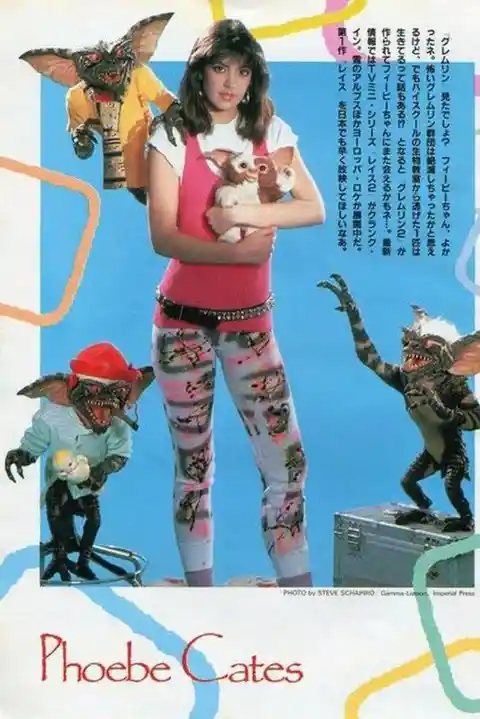
Phoebe Cates is undoubtedly one of the most beautiful actresses of the 80s era. With her sultry looks and undeniable talent, she captured the hearts of millions of fans, especially teenage boys, thanks to her memorable performances in movies like Paradise and Fast Times at Ridgemont High.
While she gained notoriety for baring all in these early films, Cates was unapologetic, sharing that she knew how the game was played and was comfortable going topless on screen, especially if it served a purpose. However, she proved her versatility and talent when she left behind the steamy roles and moved on to showcase her adorable side as the lovable Kate in Gremlins.
“ I was only 17 when I did my nude scenes in Paradise. They were serious and more difficult because they were not easily justified. But the topless scene in Fast Times at Ridgemont High was funny, which made it easy. In this business, if a girl wants a career, she has to be willing to strip. If you’ve got a good bod, then why not show it?”
Queen of the jungle Pat Benatar was almost a school teacher
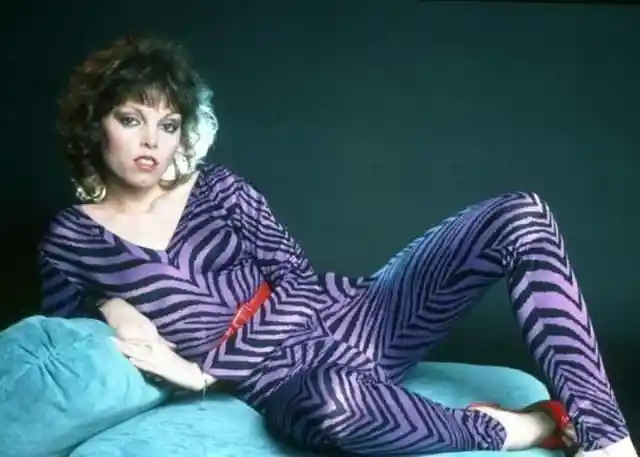
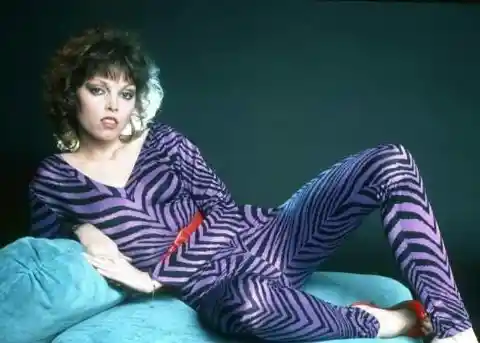
Before she became the queen of the jungle, Pat Benatar almost became a school teacher. But with a little encouragement from one of her own teachers, she chased her passion for singing and moved to New York City to hone her skills. Despite facing challenges along the way, Benatar's incredible voice caught the attention of industry reps, leading her to a record deal and ultimately earning her place in music history.
Raquel Welch in a publicity photo for the movie Hannie Caulder (1971)
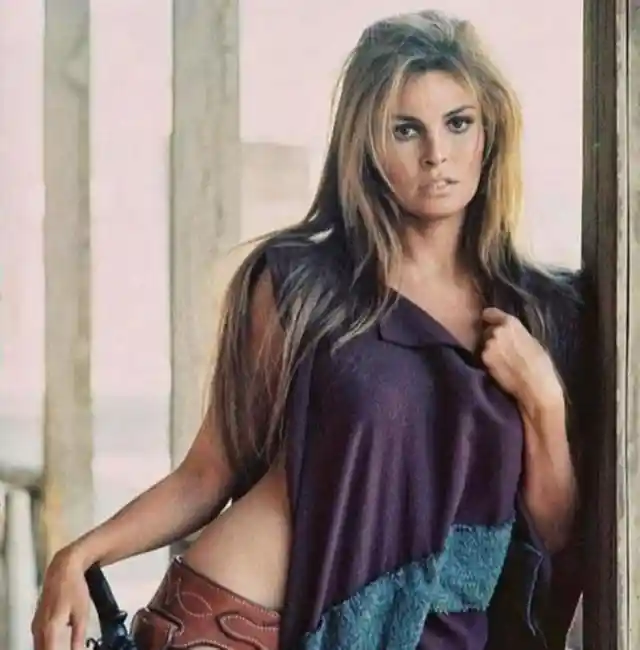

When it comes to frontier housewives seeking revenge, Raquel Welch is the one to watch. Though her role in the movie Hannie Caulder may not have been the most beloved, it proved that Welch was more than just a sex symbol. With her breakthrough performance in the film, she showed audiences that she was a force to be reckoned with and would continue to secure her place in Hollywood history.
Sally Field in promotional shoot for "Smokey and the Bandit" (1977)
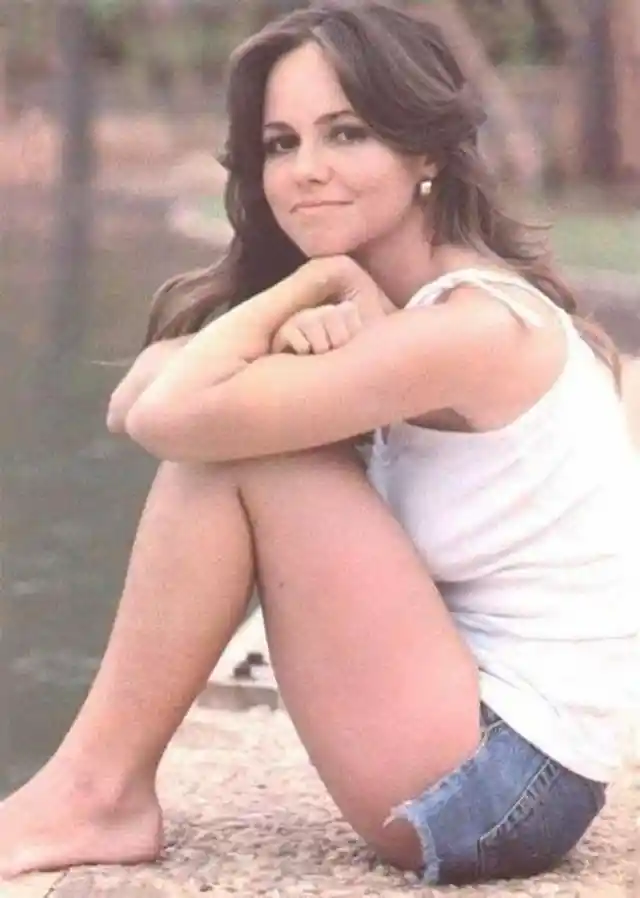
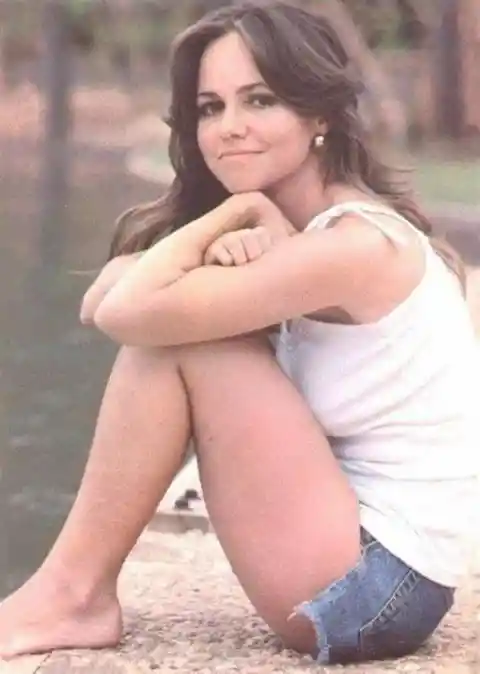
Sally Field may have started her career in less than inspiring roles, but it wasn't long before she gained recognition for her incredible talent. Her performances in Sybil and Smokey and The Bandit, both wildly different, showcased her versatility and cemented her place as America's sweetheart.
The sassy Barbi Benton, 1970

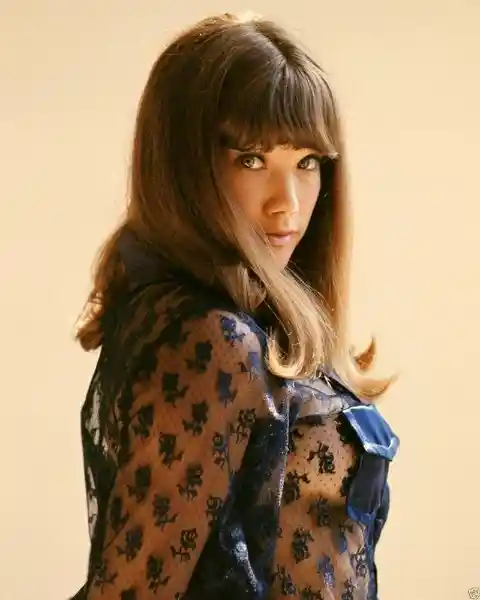
Barbi Benton may have gotten her start as a model for Hugh Hefner, but she knew that she needed to branch out from the magazine world to establish longevity in her career. Making a name for herself in television and film, she became a popular late-night talk show guest, captivating audiences with her stunning looks and engaging conversation. After retiring from the entertainment industry, Benton found success as an interior designer while focusing on her family.
The Sophia Loren on the set of a film in the 1960s.
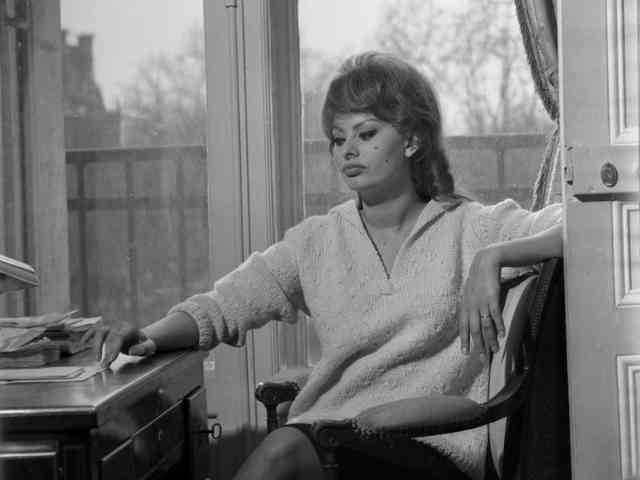
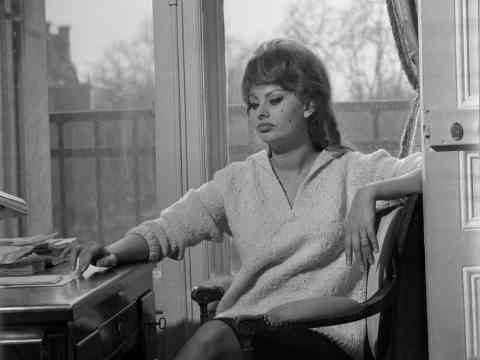
In the realm of the 1960s silver screen, Sophia Loren was the name that echoed through theaters worldwide. Hailing from Italy, she brought more to the global film scene than one could compare to even the most delectable spaghetti and meatballs. She's not just an actress; she's a cinematic force, anchoring every film she graces with her talent. You might think you haven't seen her work, but trust me, her influence is everywhere.
But ask Sophia herself about the role that cemented her stardom, and she'll tell you it's not a thought that crosses her mind often. It's only when she pauses to glance back at the collective tapestry of her roles that she even considers it, reflecting on her rich and diverse career with the humble consideration of a true artist.
“ Because when you are, you still wonder if whatever you did in your life is the right thing, even though it took so many years. You only realize this when people talk about you and your career, and they remind you of things that please you. It’s very nice to live it, to go through it again, with other people who saw you from the beginning.”
Lynda Carter: The Renaissance Woman of the Screen**
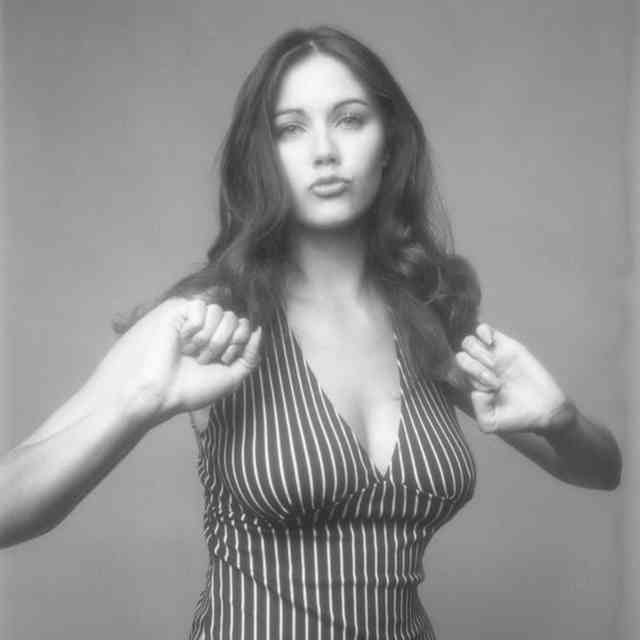
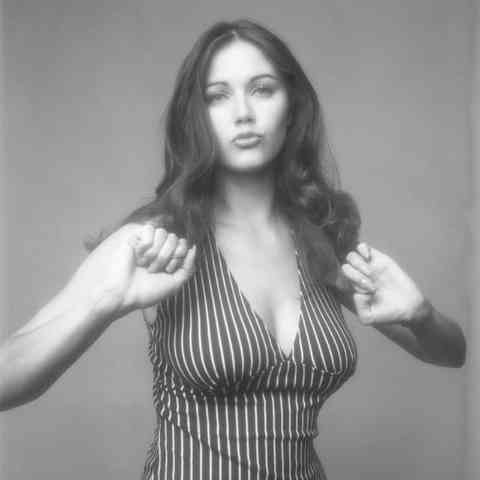
Before Lynda Carter became synonymous with Wonder Woman, she was a force to be reckoned with—an athlete shining on 'Battle of the Network Stars', and a singer who could belt out a tune at a moment's notice. Fluent in multiple languages, she was juggling multiple talents long before it was the norm in Hollywood.
But acting wasn't her first love; music was. She dreamt of leading a band, touring, and making music, but that dream didn't take off immediately. It was back in Arizona, after a detour into the pageant scene and a string of wins, that she caught an agent's eye. And just like that, she transitioned from stages to screens, almost effortlessly.
Jayne Mansfield, a blonde bombshell stuns in yellow
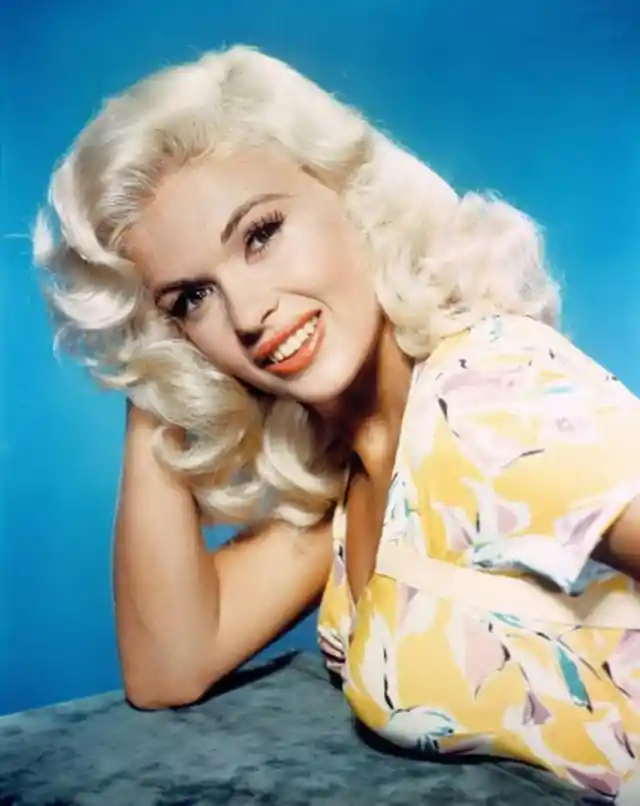
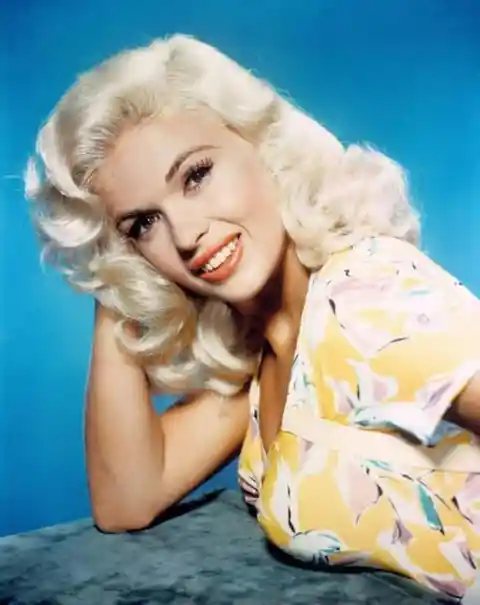
In the 1950s, Jayne Mansfield dazzled as 20th Century Fox's golden girl, a bubbly, blonde bombshell often seen as the studio's counter to Marilyn Monroe. But Jayne was more than a mirror image of Marilyn—she had a sparkle uniquely her own. As the '60s rolled in, with its craving for authenticity, Mansfield found herself stepping back to the stage, her star persona too grand for the era's new tastes.
Her life wasn't without its mysteries, though. In 1966, she caused quite a stir, photographed with the enigmatic Anton LaVey in San Francisco. Rumors swirled, but Jayne brushed them off with a laugh, insisting her time with LaVey was nothing more than friendly banter. The truth remained her secret, as just a year later, the world lost Jayne Mansfield to a tragic accident, leaving behind a legacy wrapped in speculation and stardom.